Презентація на тему «London» (варіант 4)
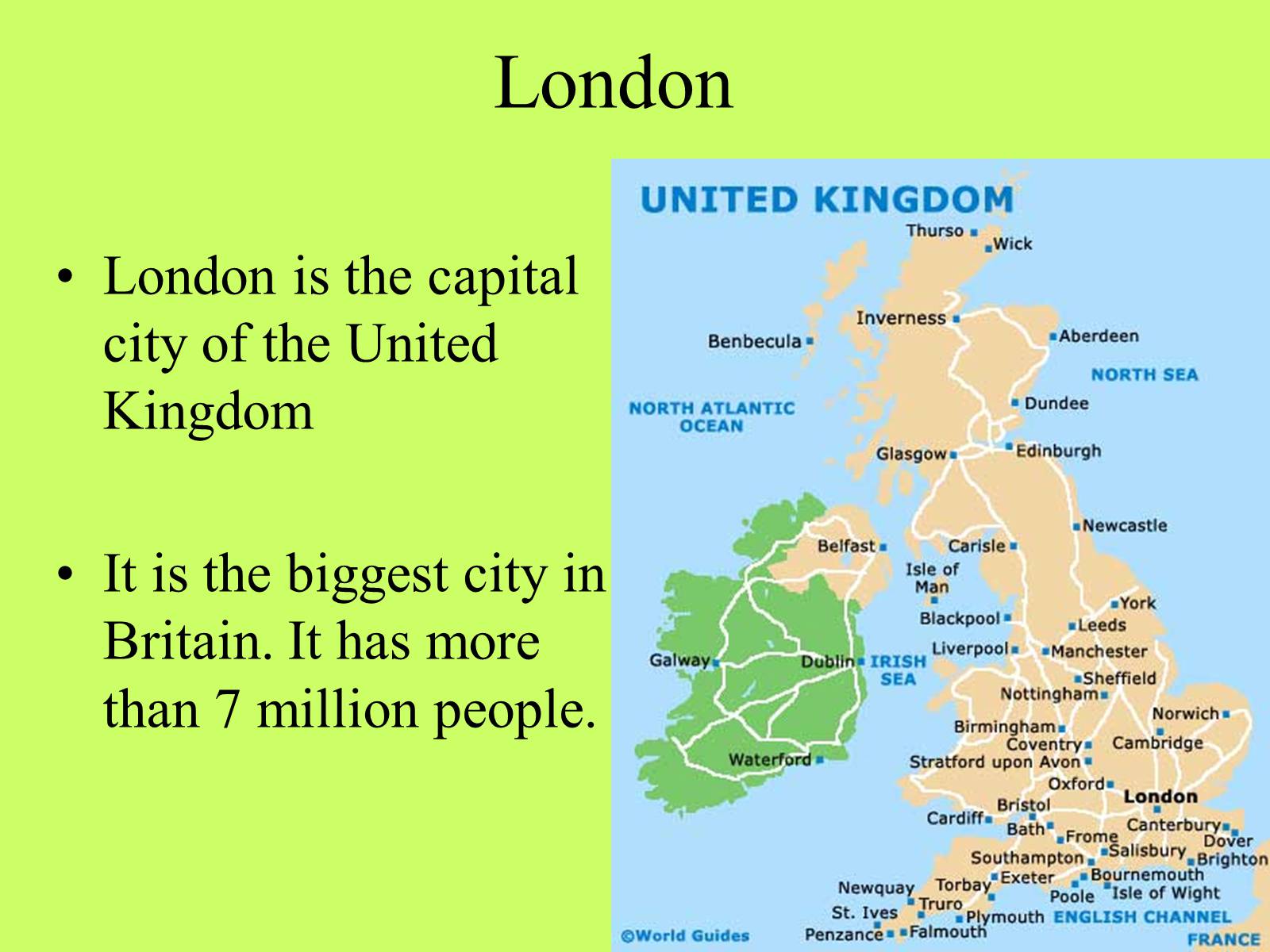
London
London is the capital city of the United Kingdom
It is the biggest city in Britain. It has more than 7 million people.
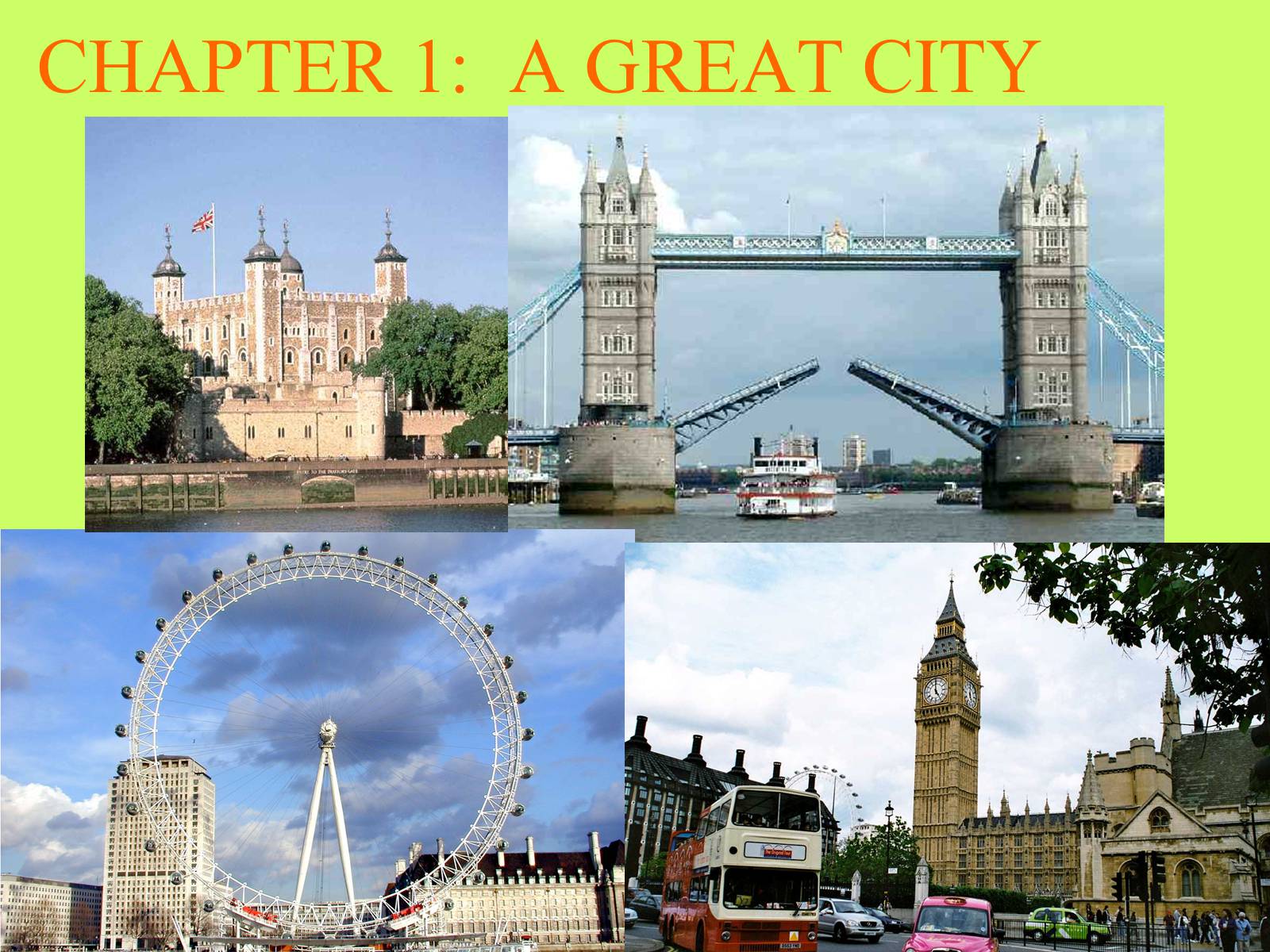
CHAPTER 1: A GREAT CITY
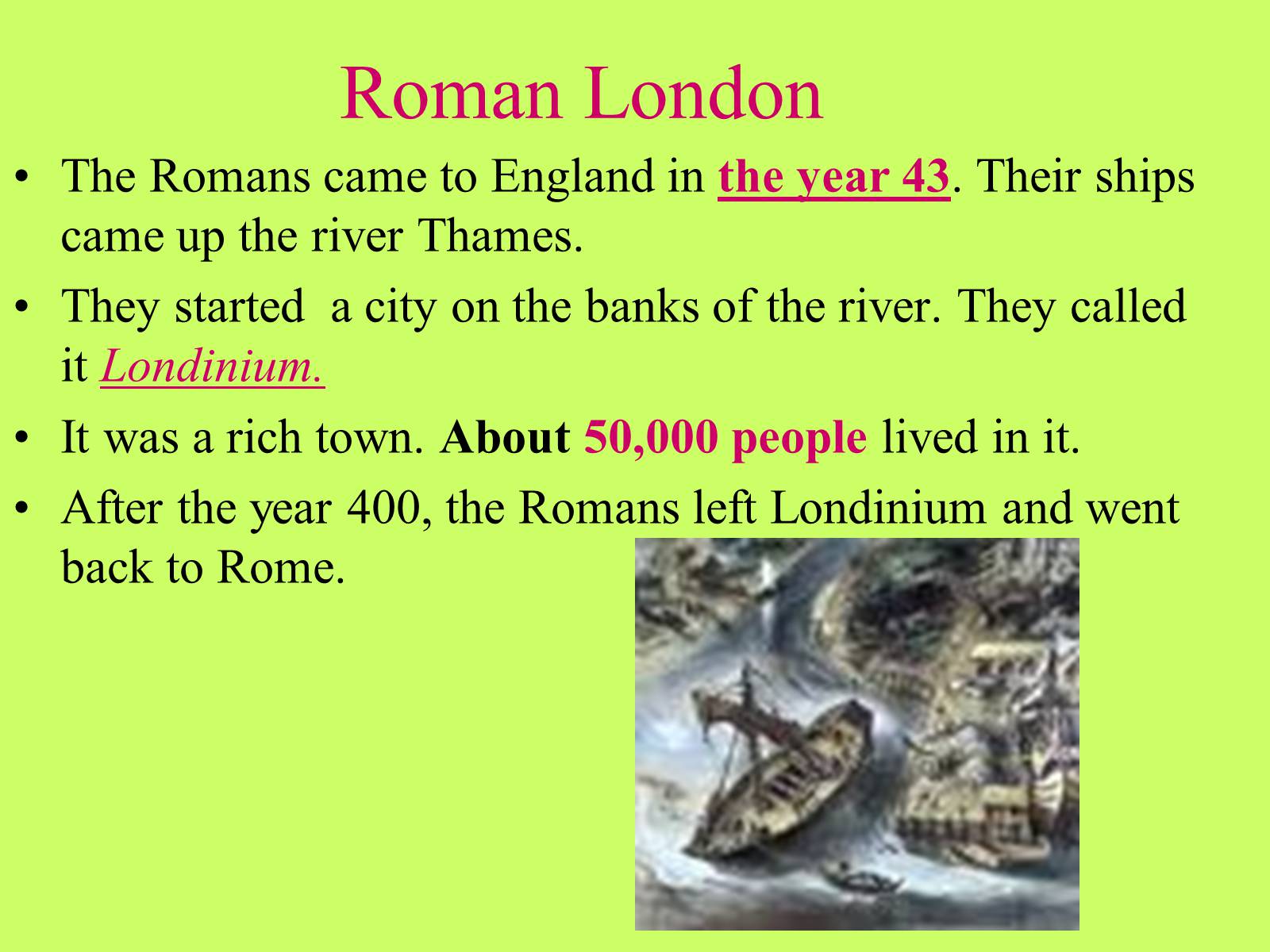
Roman London
The Romans came to England in the year 43. Their ships came up the river Thames.
They started a city on the banks of the river. They called it Londinium.
It was a rich town. About 50,000 people lived in it.
After the year 400, the Romans left Londinium and went back to Rome.
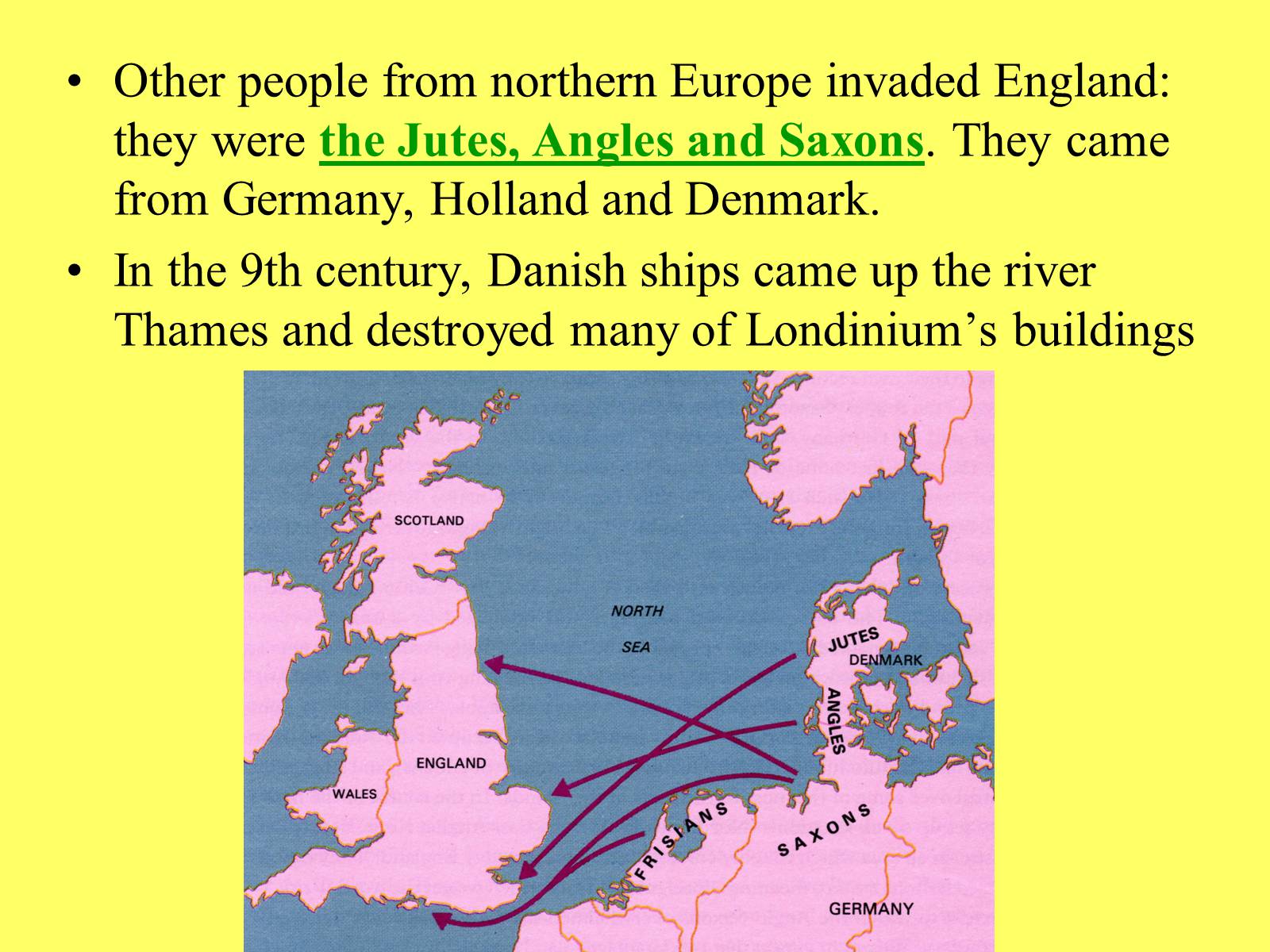
Other people from northern Europe invaded England: they were the Jutes, Angles and Saxons. They came from Germany, Holland and Denmark.
In the 9th century, Danish ships came up the river Thames and destroyed many of Londinium's buildings
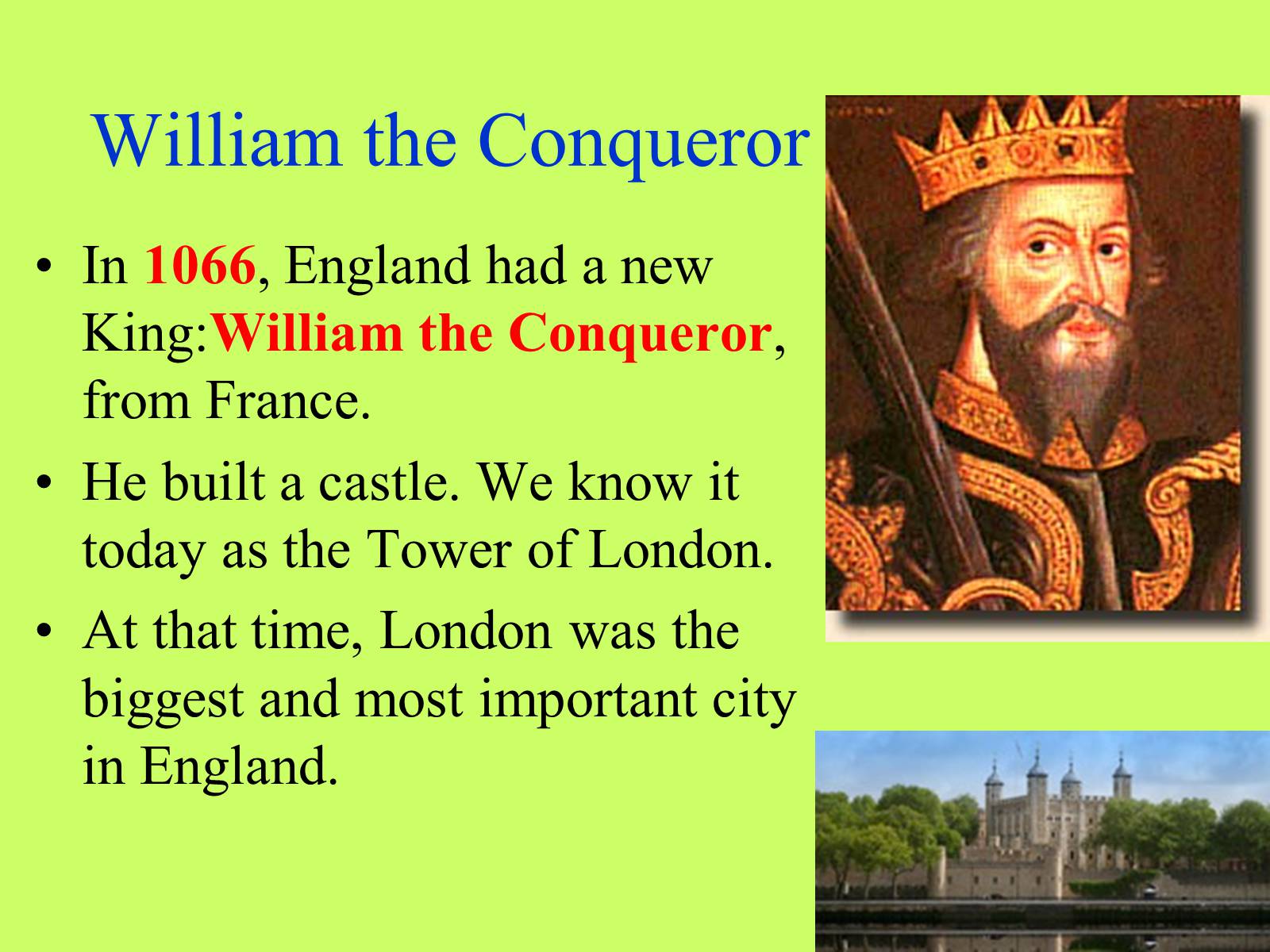
William the Conqueror
In 1066, England had a new King:William the Conqueror, from France.
He built a castle. We know it today as the Tower of London.
At that time, London was the biggest and most important city in England.
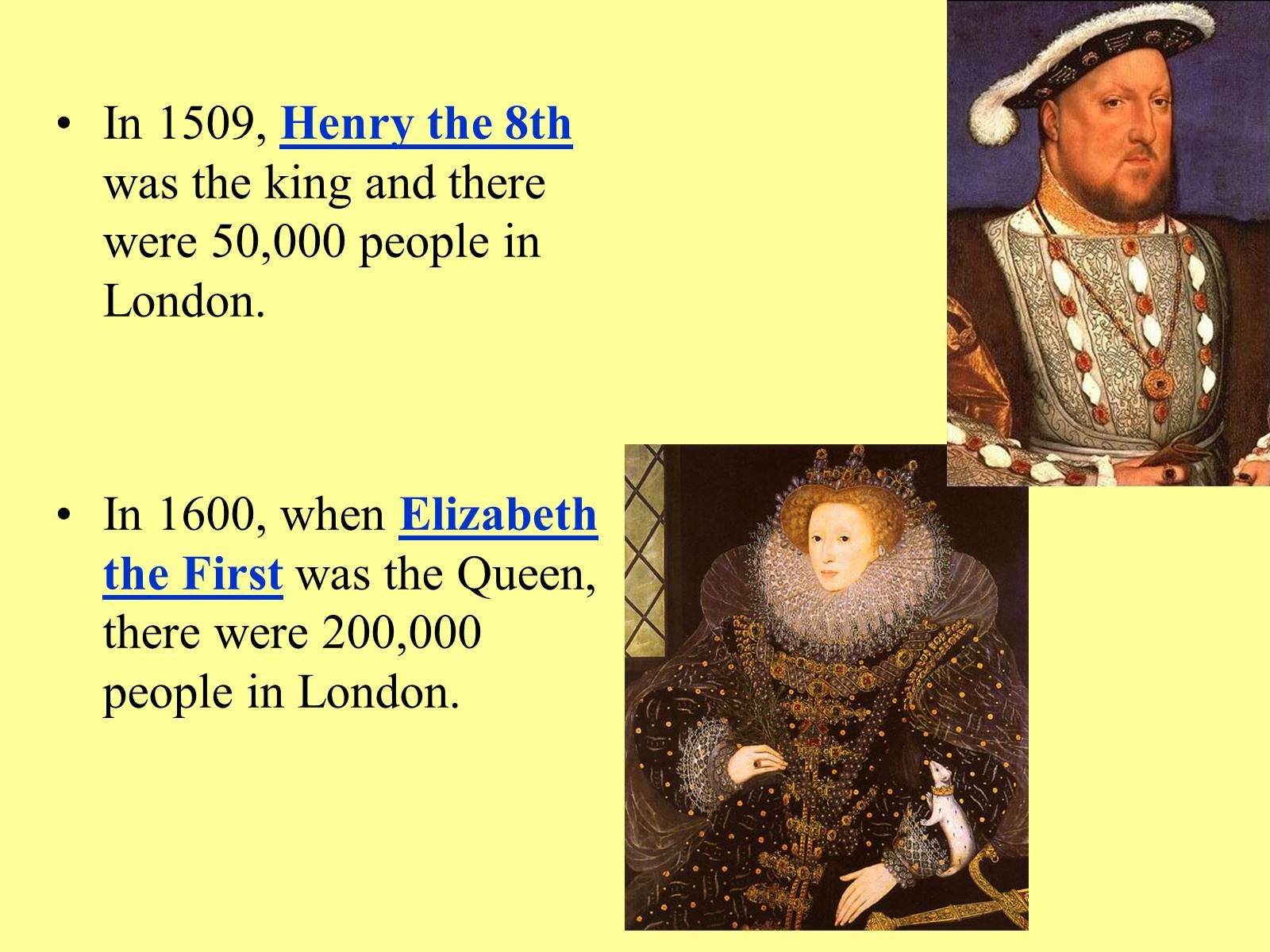
In 1509, Henry the 8th was the king and there were 50,000 people in London.
In 1600, when Elizabeth the First was the Queen, there were 200,000 people in London.
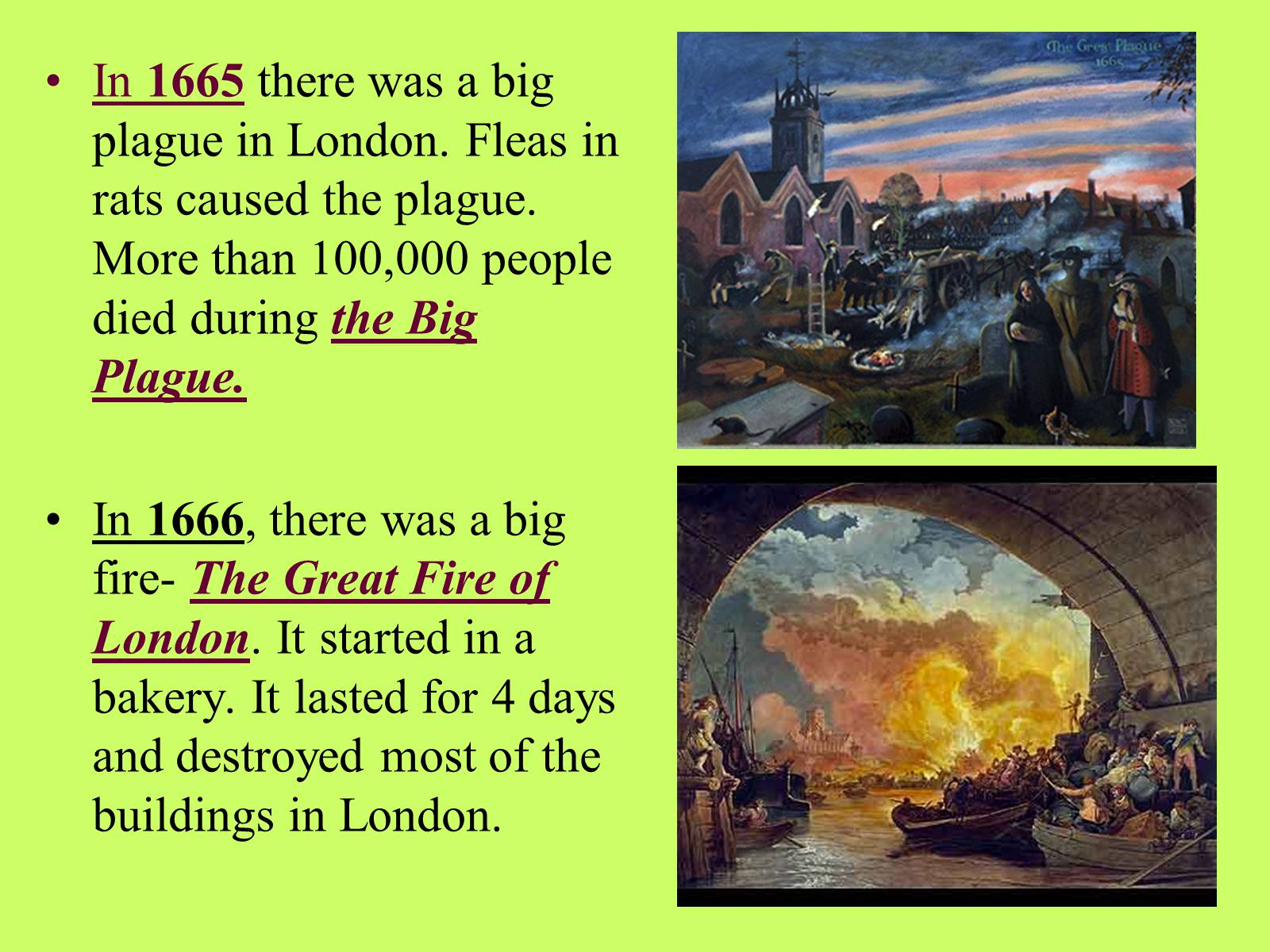
In 1665 there was a big plague in London. Fleas in rats caused the plague. More than 100,000 people died during the Big Plague.
In 1666, there was a big fire- The Great Fire of London. It started in a bakery. It lasted for 4 days and destroyed most of the buildings in London.
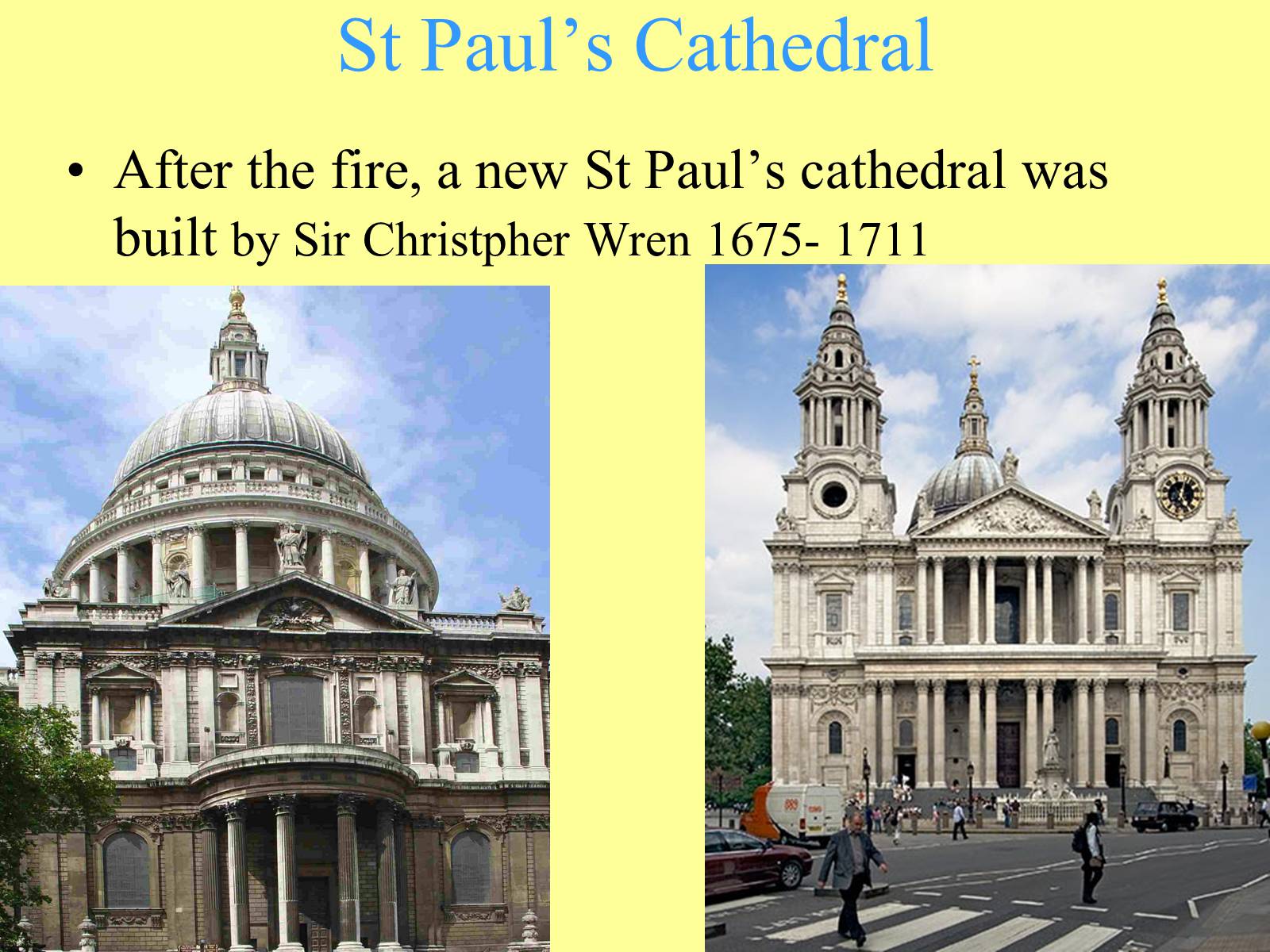
St Paul's Cathedral
After the fire, a new St Paul's cathedral was built by Sir Christpher Wren 1675- 1711
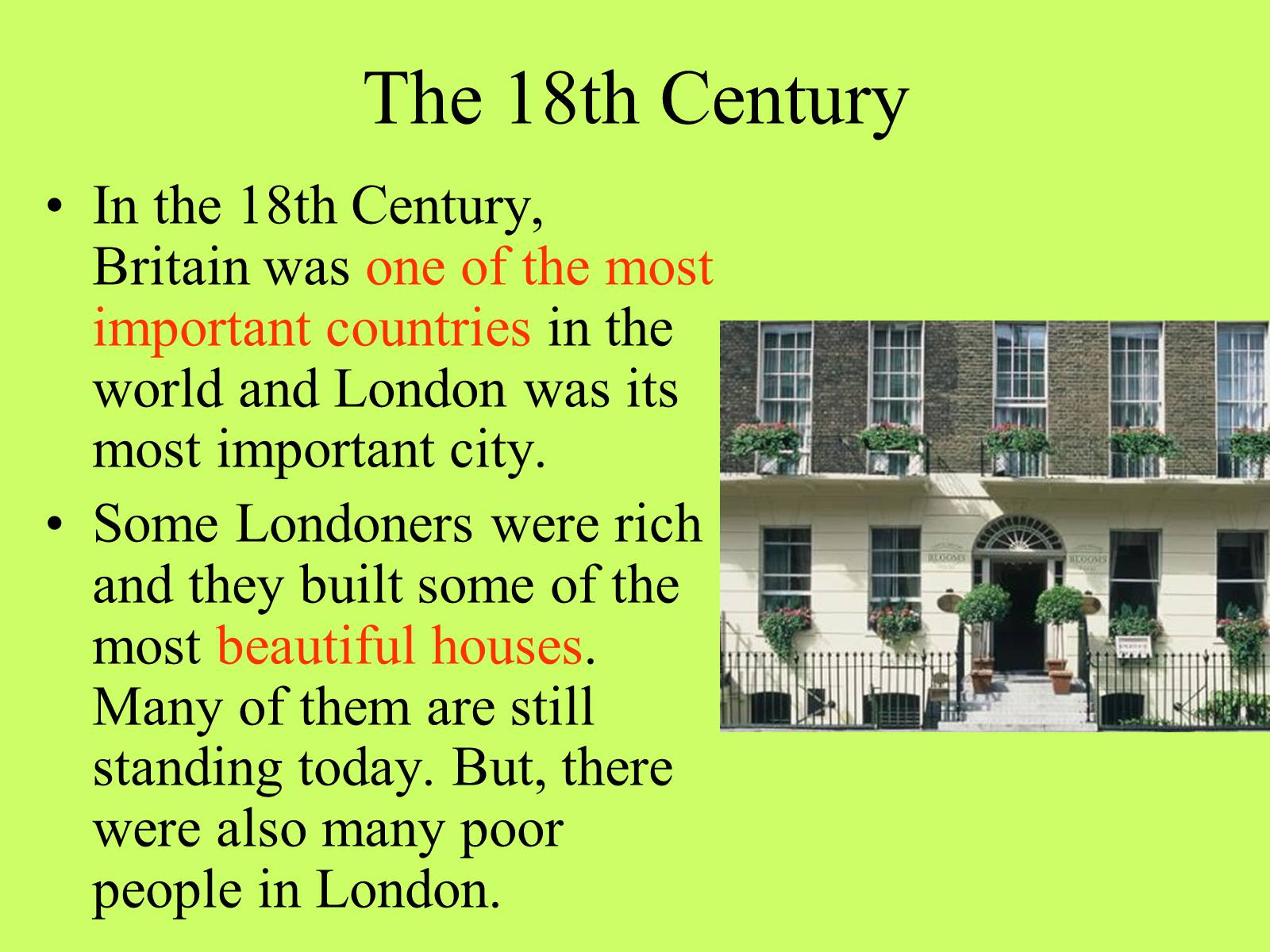
The 18th Century
In the 18th Century, Britain was one of the most important countries in the world and London was its most important city.
Some Londoners were rich and they built some of the most beautiful houses. Many of them are still standing today. But, there were also many poor people in London.
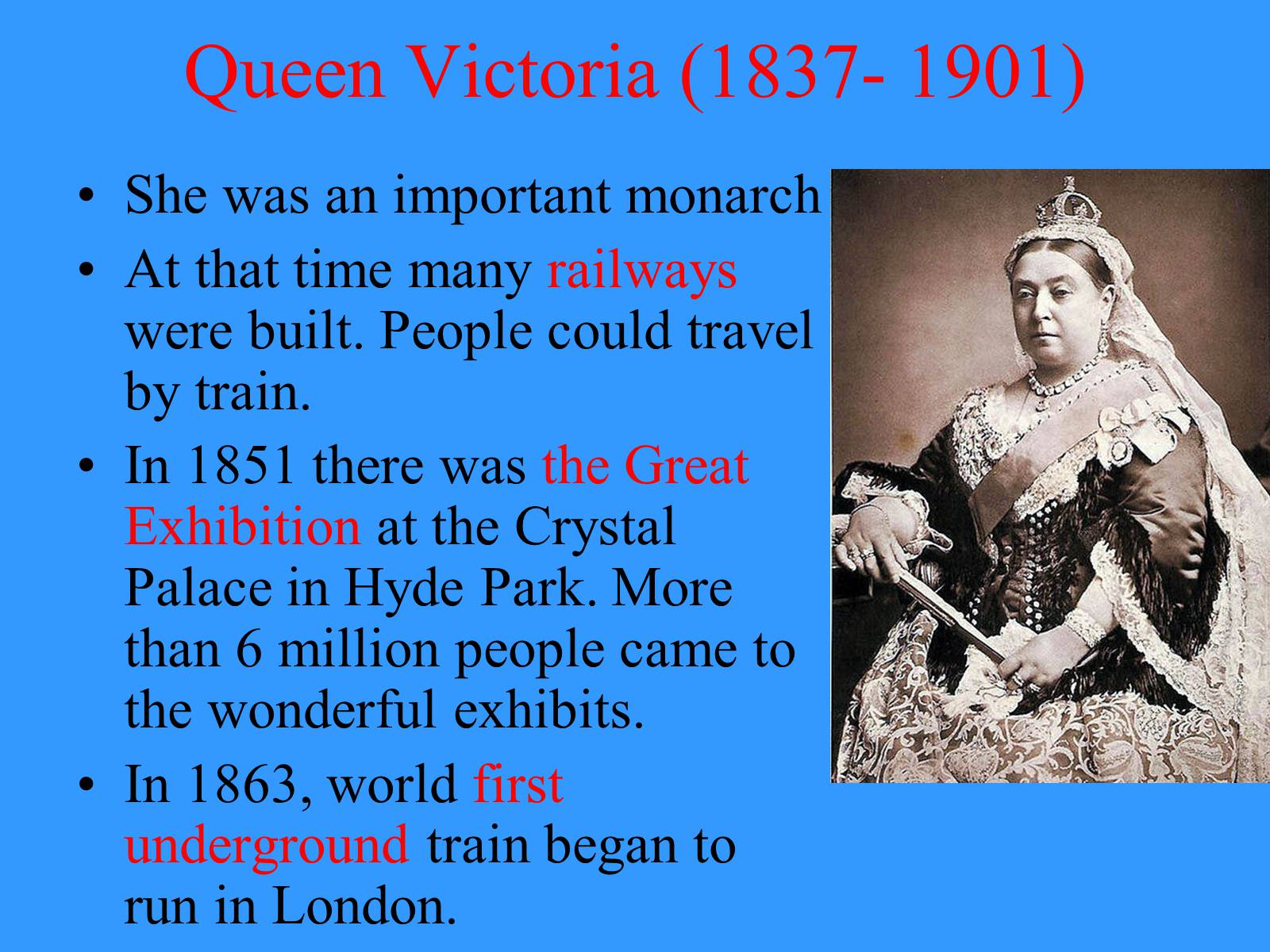
Queen Victoria (1837- 1901)
She was an important monarch
At that time many railways were built. People could travel by train.
In 1851 there was the Great Exhibition at the Crystal Palace in Hyde Park. More than 6 million people came to the wonderful exhibits.
In 1863, world first underground train began to run in London.
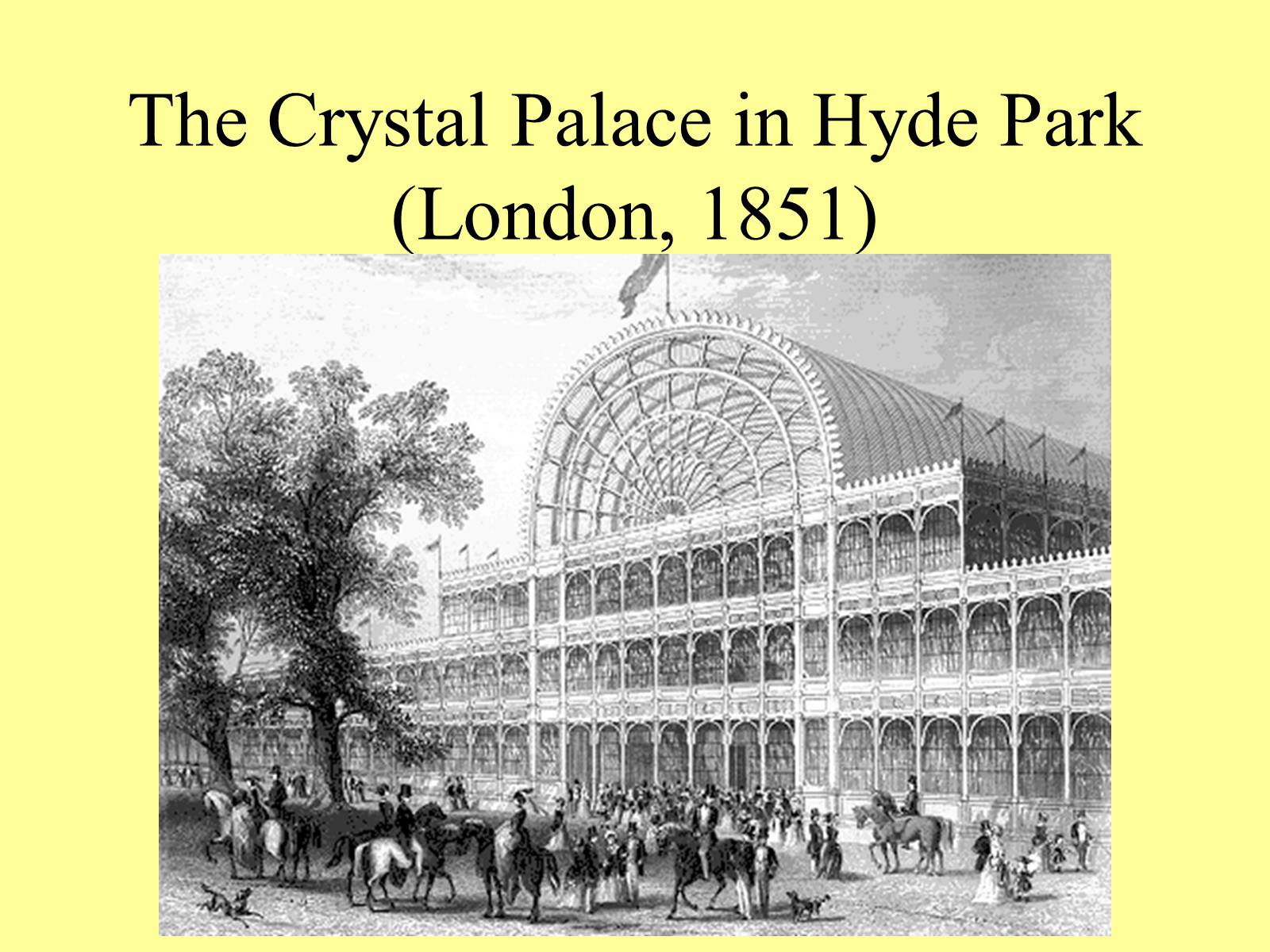
The Crystal Palace in Hyde Park (London, 1851)

20th Century
During the Second World War (1939-1945), the German bombs destroyed many buildings in London, but they didn't destroy St Paul's Cathedral. Now, London has some of the world's most exciting new buildings.
Today people from all over the world live in London, where you can hear about 300 different languages.
People love to visit London!!.
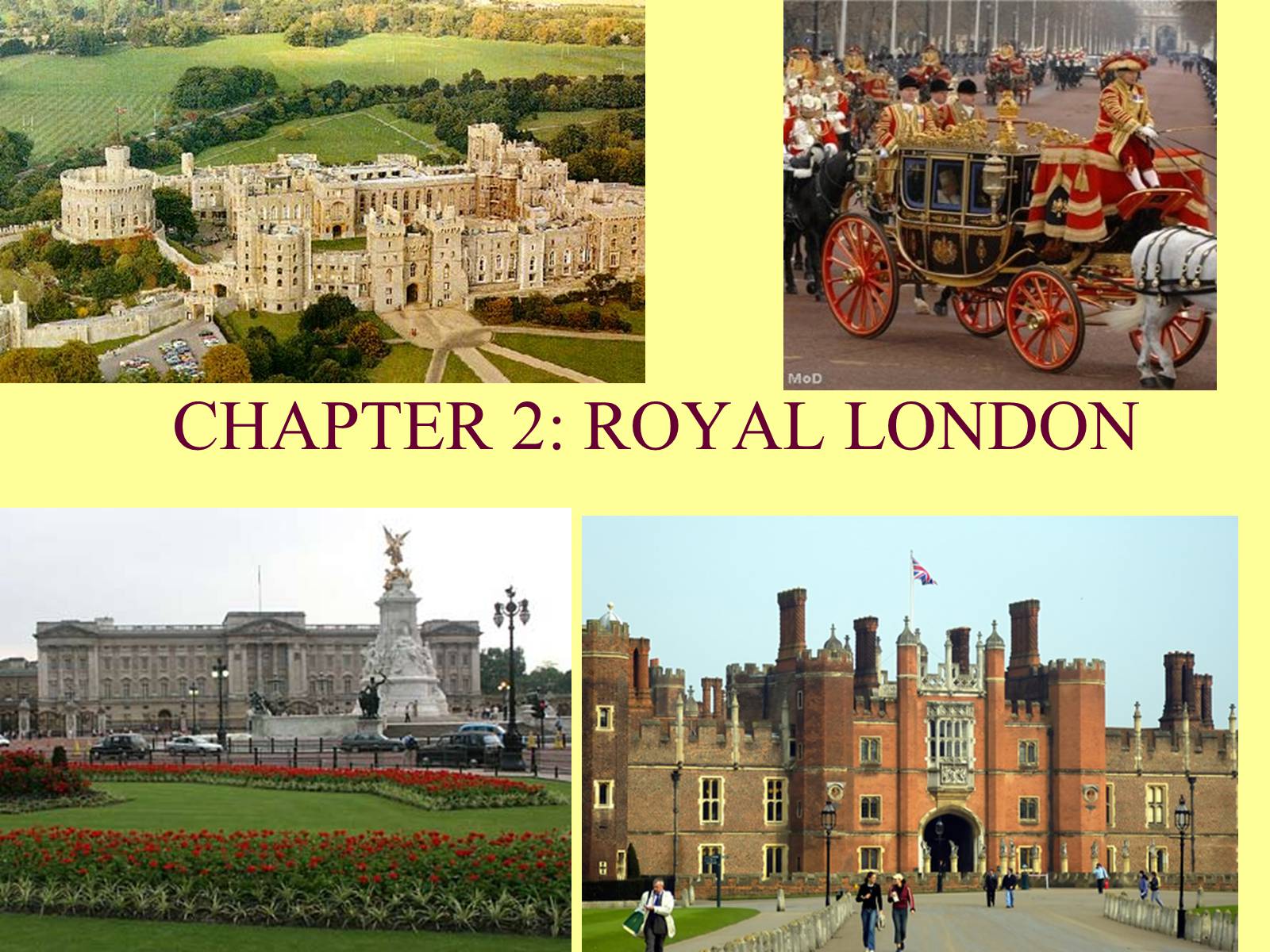
CHAPTER 2: ROYAL LONDON
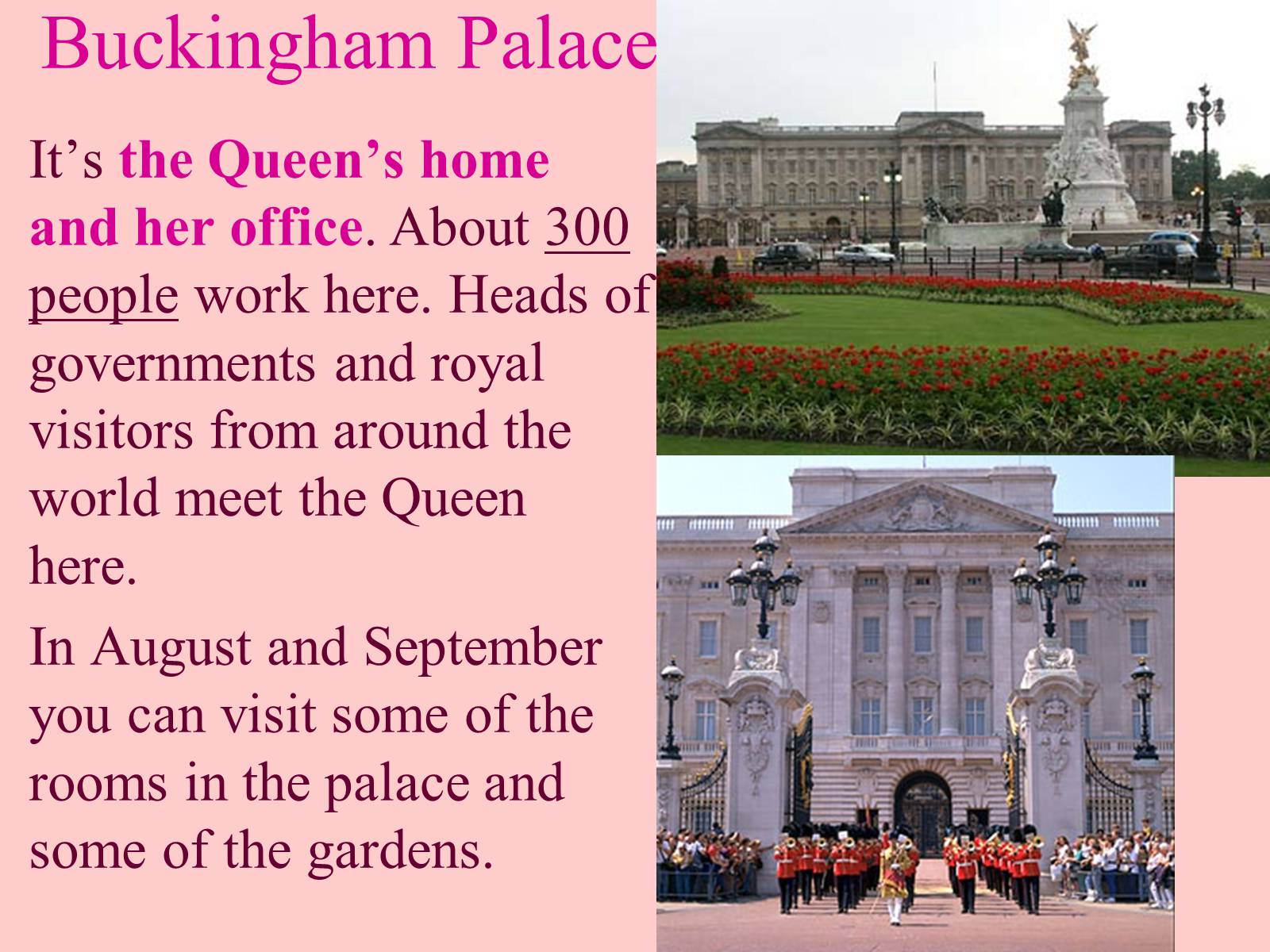
Buckingham Palace
It's the Queen's home and her office. About 300 people work here. Heads of governments and royal visitors from around the world meet the Queen here.
In August and September you can visit some of the rooms in the palace and some of the gardens.
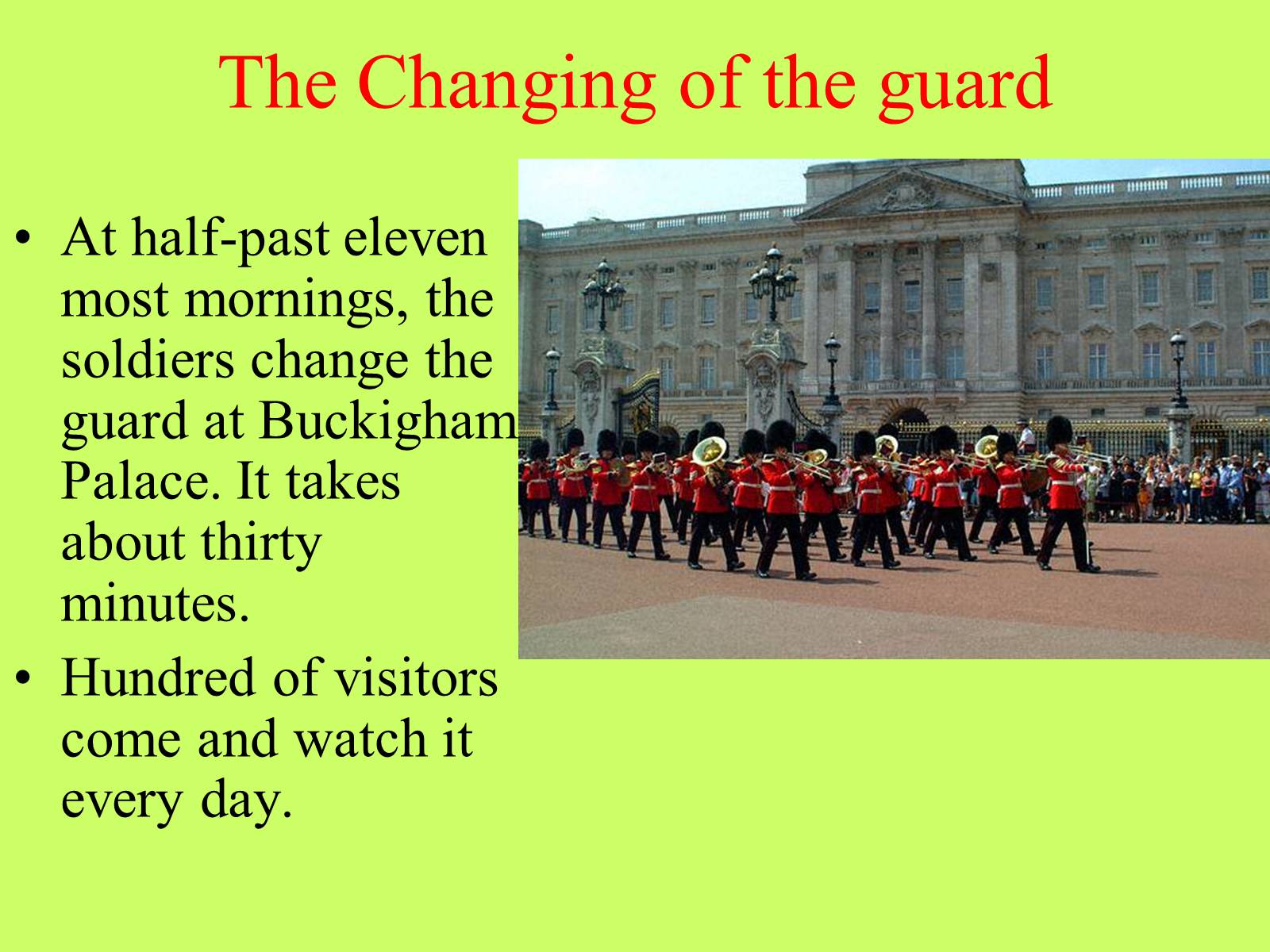
The Changing of the guard
At half-past eleven most mornings, the soldiers change the guard at Buckigham Palace. It takes about thirty minutes.
Hundred of visitors come and watch it every day.
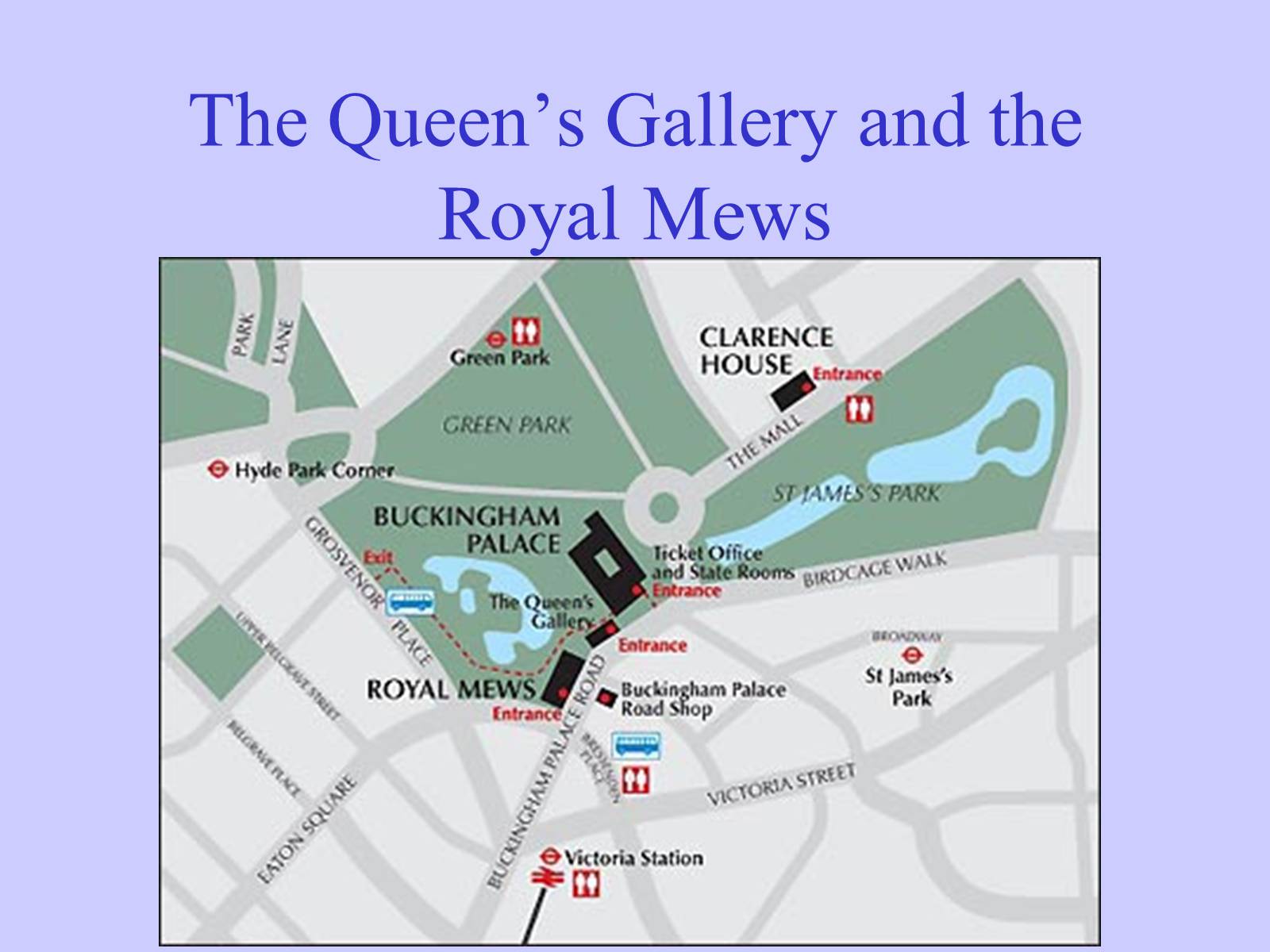
The Queen's Gallery and the Royal Mews

The Queen's Gallery is in Buckingham Palace Road.
It exhibits works of art from the Royal Collection.
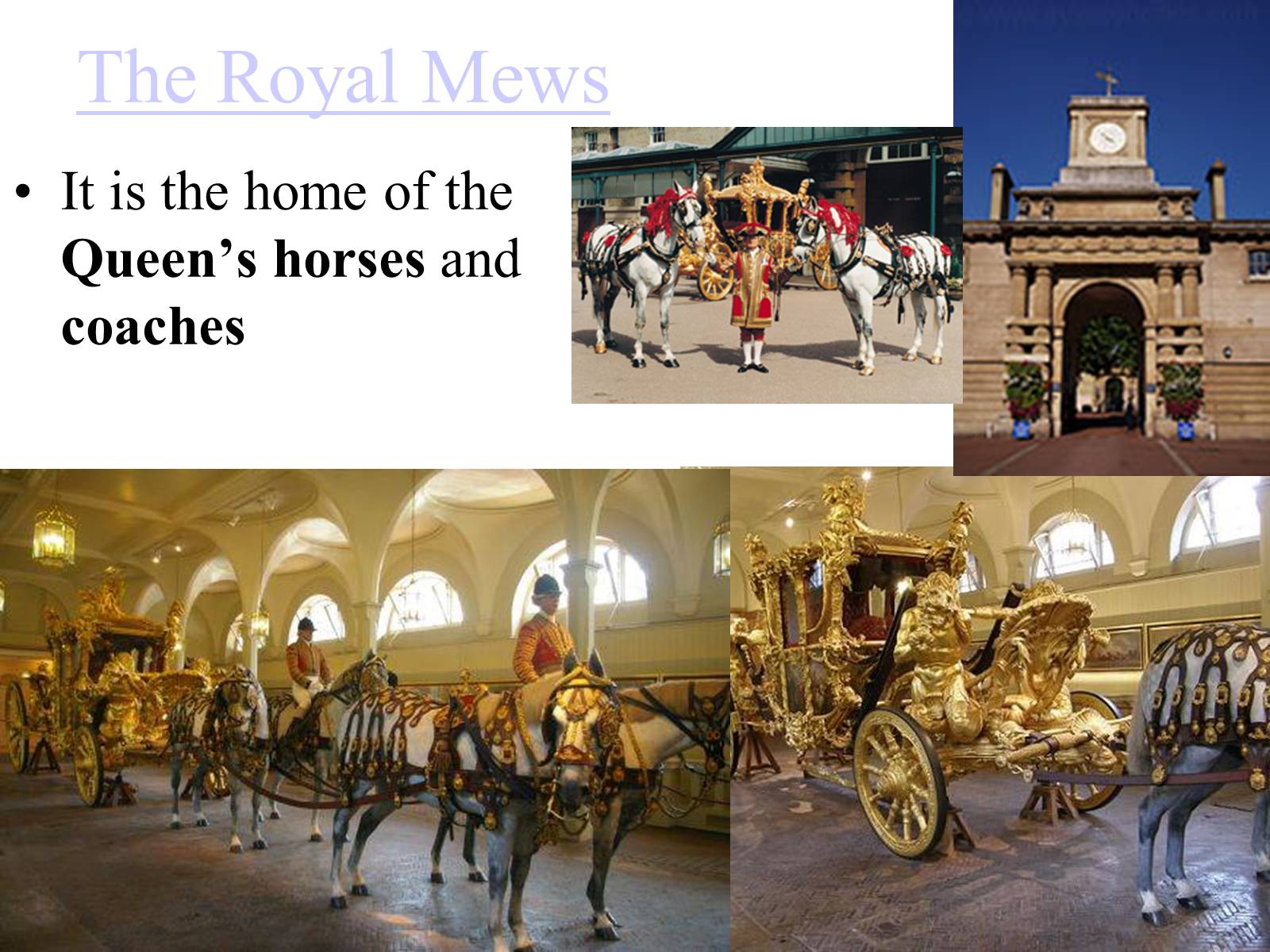
The Royal Mews
It is the home of the Queen's horses and coaches
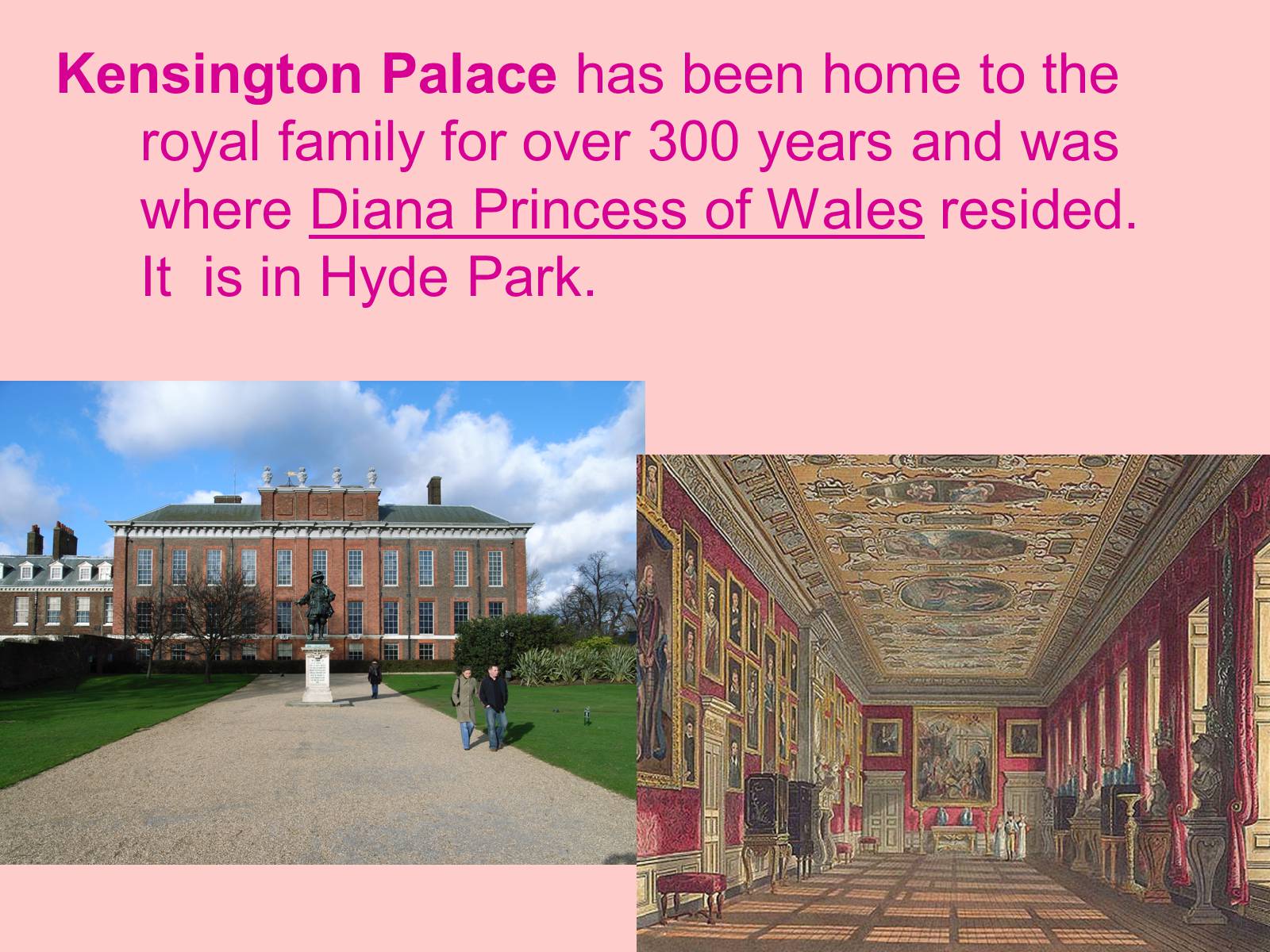
Kensington Palace has been home to the royal family for over 300 years and was where Diana Princess of Wales resided.It is in Hyde Park.

Windsor Castle
Windsor is a small town, half an hour by train from London. There, you can visit Windsor Castle, the largest and oldest occupied castle in the world, is one of the official residences of Her Majesty The Queen. She goes there at the weekends.
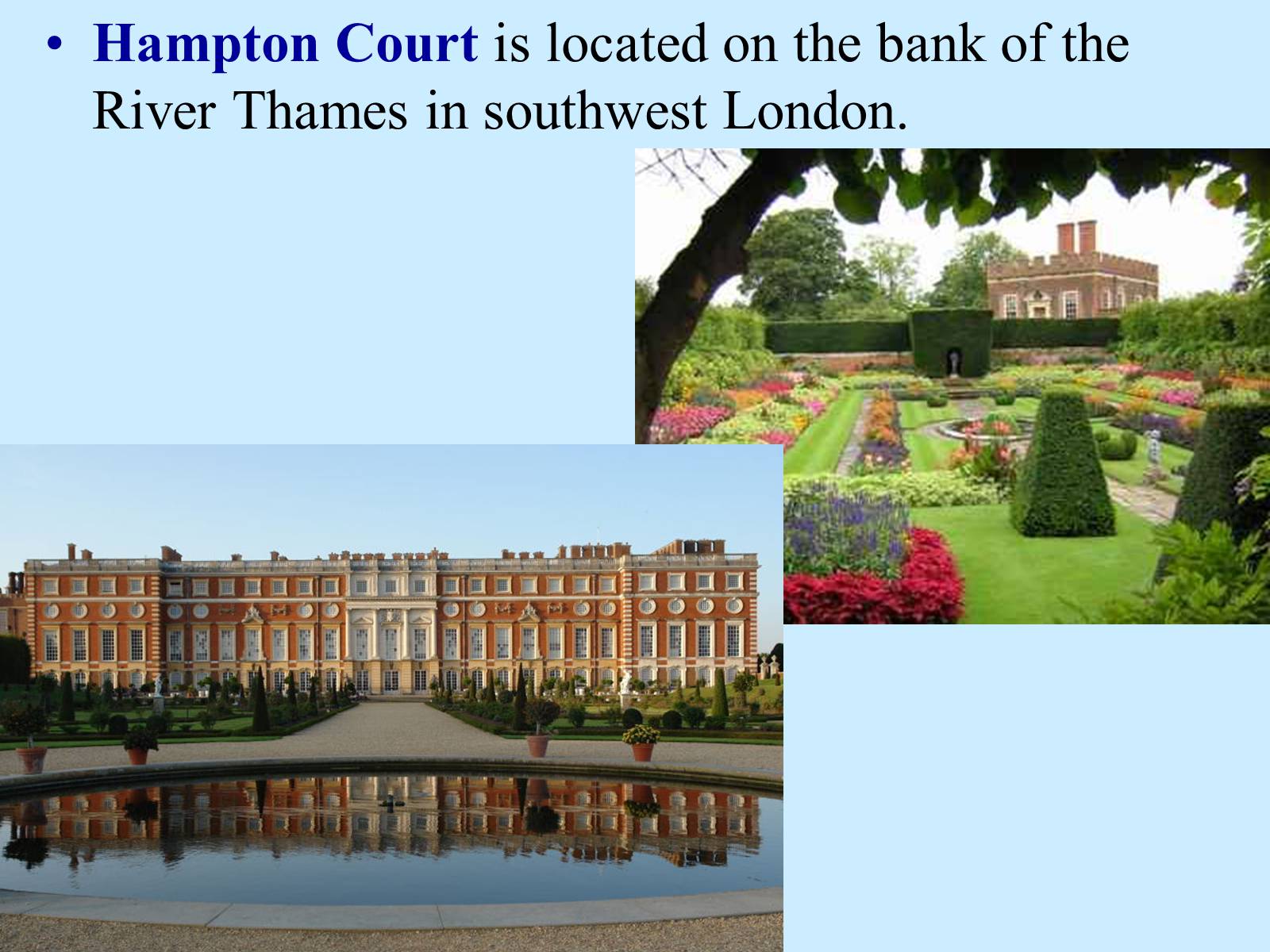
Hampton Court is located on the bank of the River Thames in southwest London.

The Royal Parades
On the second Saturday in June, London celebrates the Queen's birthday with a big parade: The Trooping of the Colour.
* The Queen opens the Parliament in November, when the British government begins to work for the year.
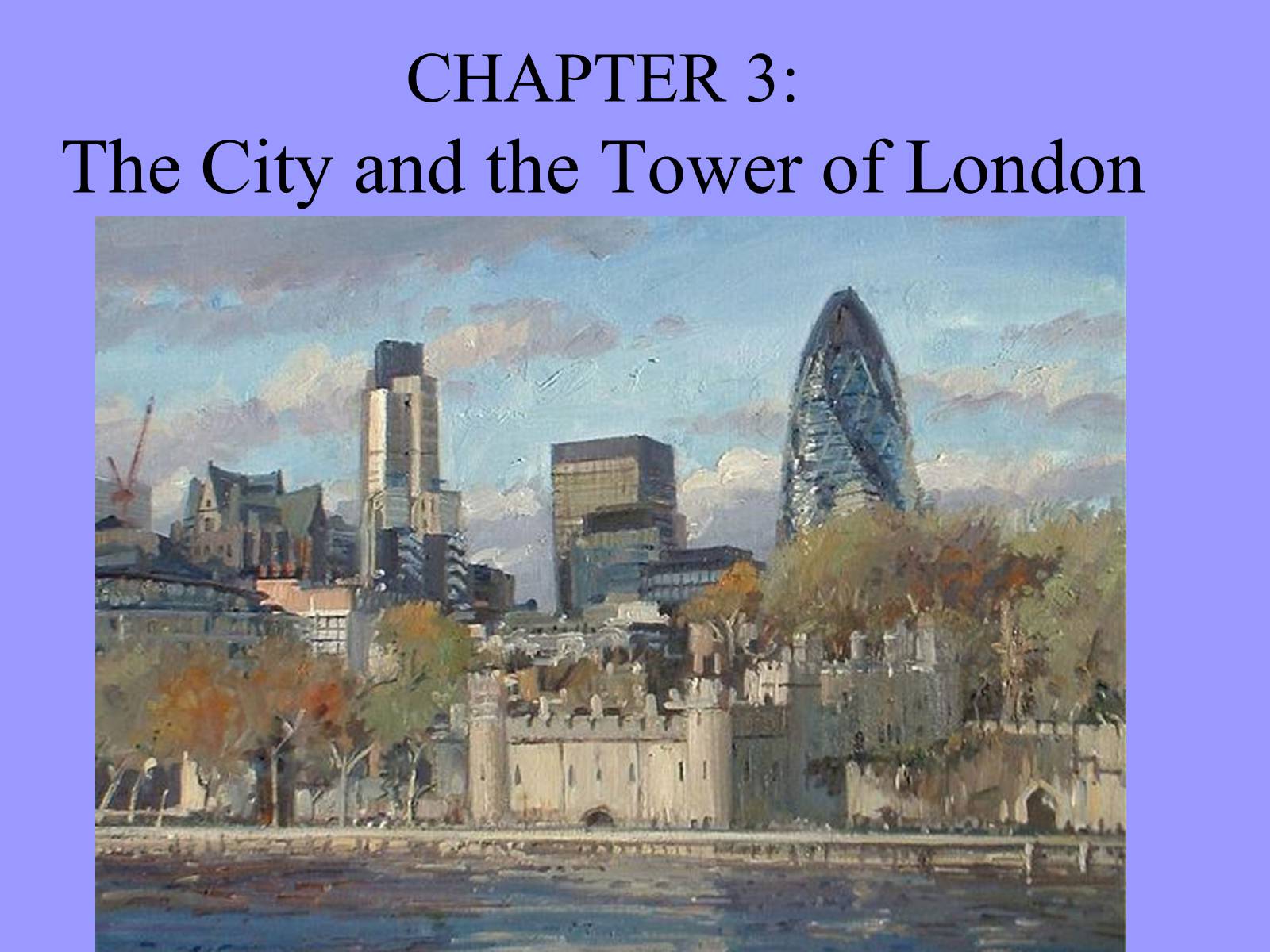
CHAPTER 3:The City and the Tower of London
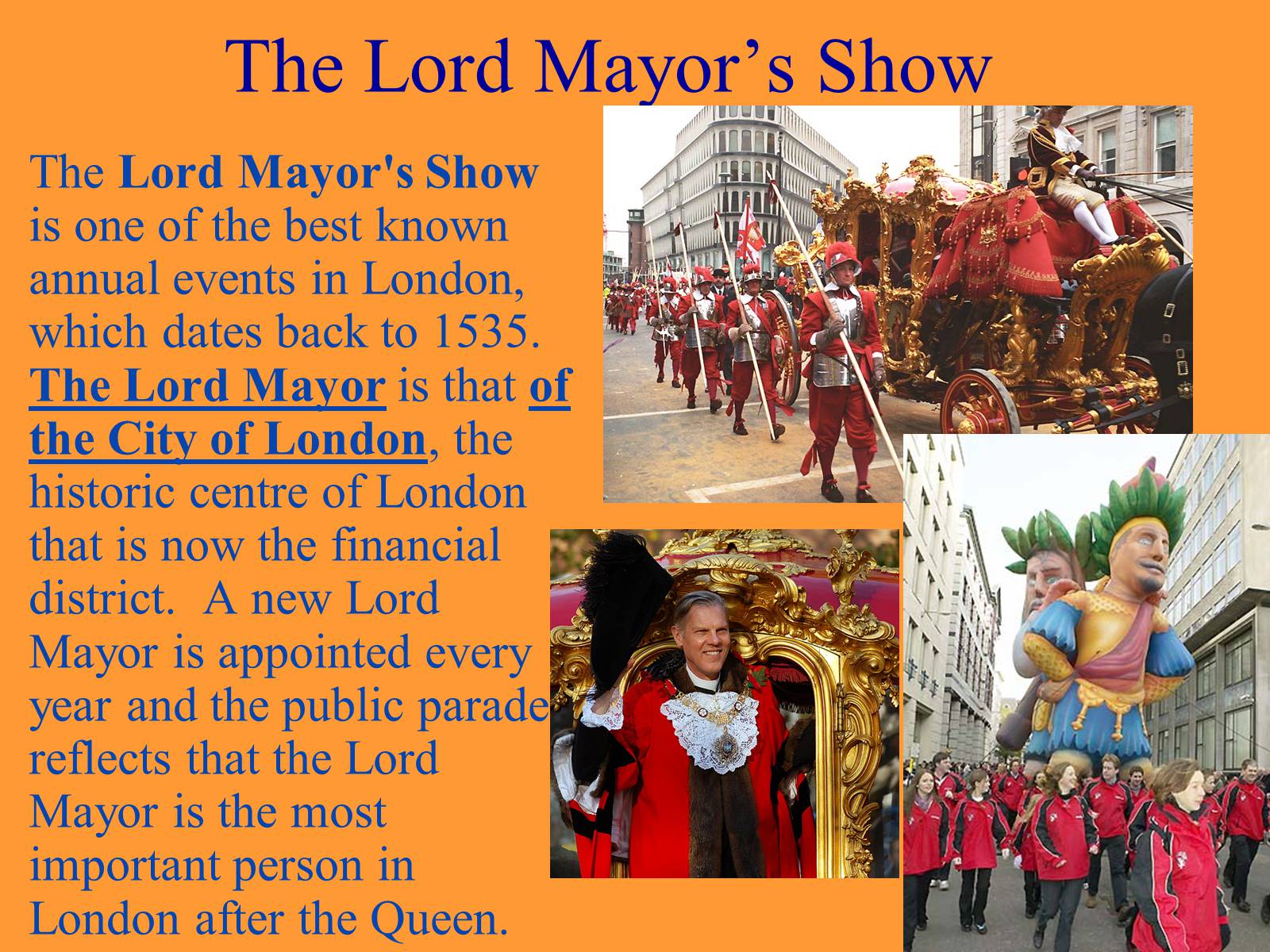
The Lord Mayor's Show
The Lord Mayor's Show is one of the best known annual events in London, which dates back to 1535. The Lord Mayor is that of the City of London, the historic centre of London that is now the financial district. A new Lord Mayor is appointed every year and the public parade reflects that the Lord Mayor is the most important person in London after the Queen.
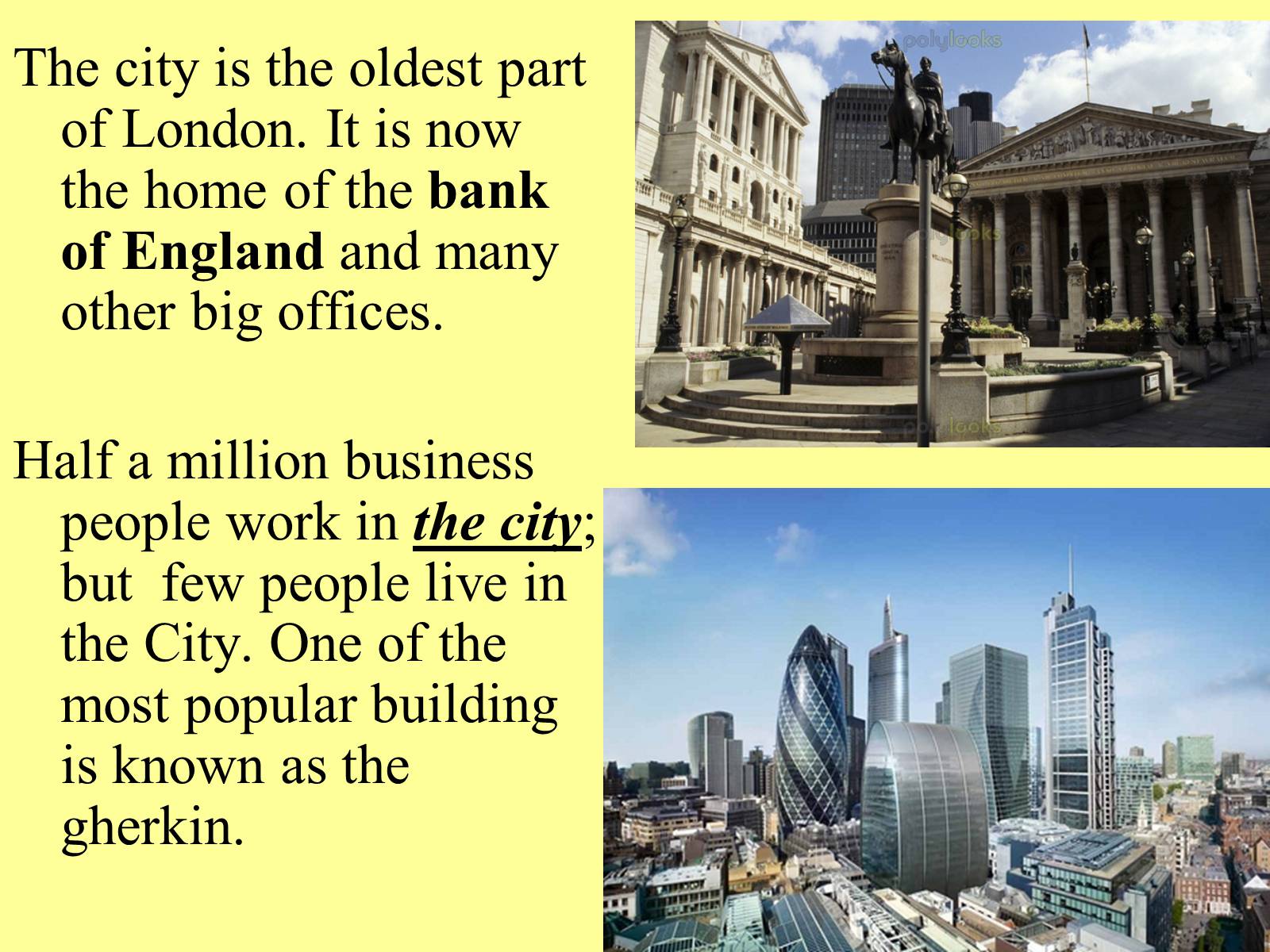
The city is the oldest part of London. It is now the home of the bank of England and many other big offices.
Half a million business people work in the city; but few people live in the City. One of the most popular building is known as the gherkin.
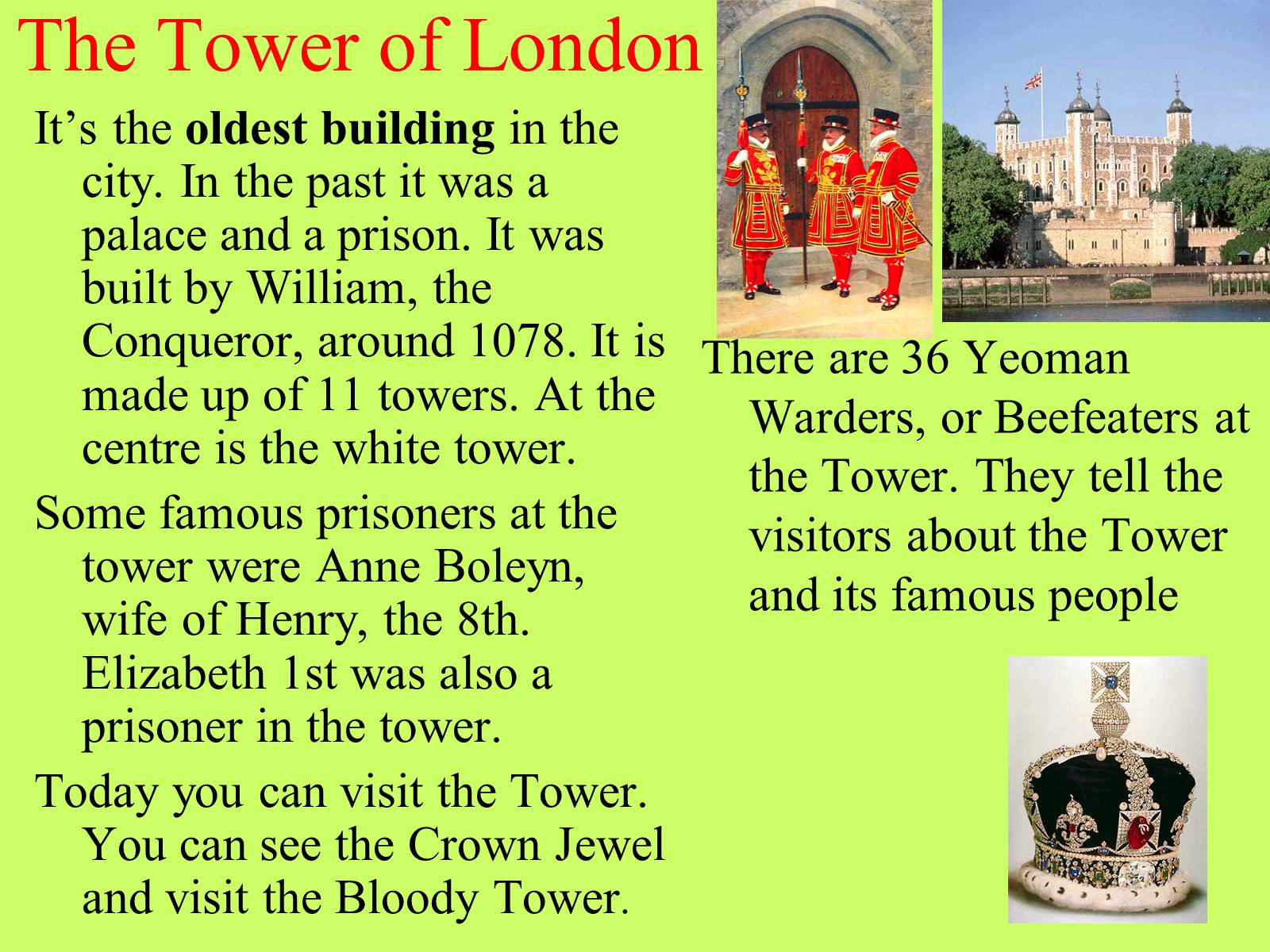
The Tower of London
It's the oldest building in the city. In the past it was a palace and a prison. It was built by William, the Conqueror, around 1078. It is made up of 11 towers. At the centre is the white tower.
Some famous prisoners at the tower were Anne Boleyn, wife of Henry, the 8th. Elizabeth 1st was also a prisoner in the tower.
Today you can visit the Tower. You can see the Crown Jewel and visit the Bloody Tower.
There are 36 Yeoman Warders, or Beefeaters at the Tower. They tell the visitors about the Tower and its famous people
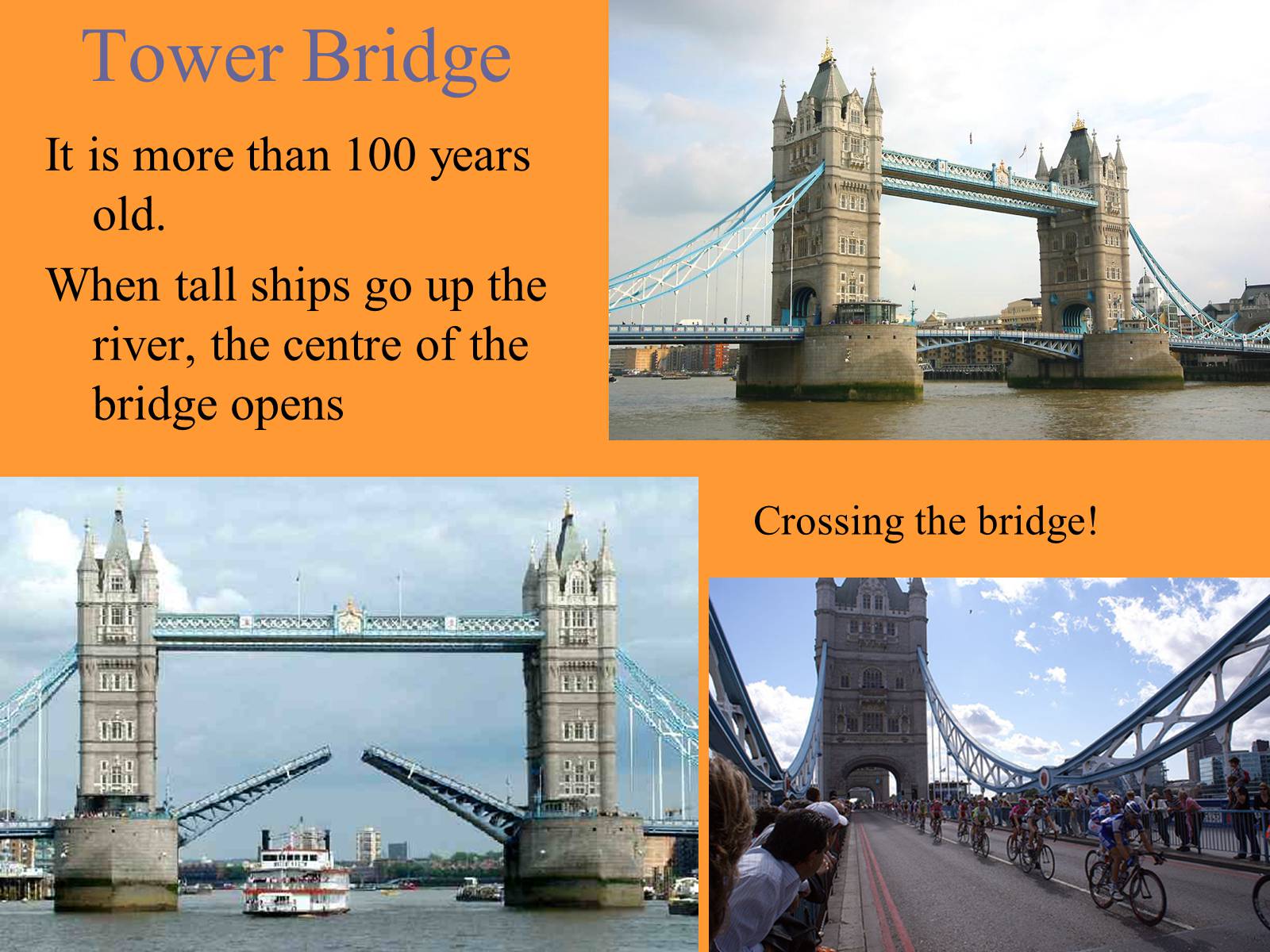
Tower Bridge
It is more than 100 years old.
When tall ships go up the river, the centre of the bridge opens
Crossing the bridge!
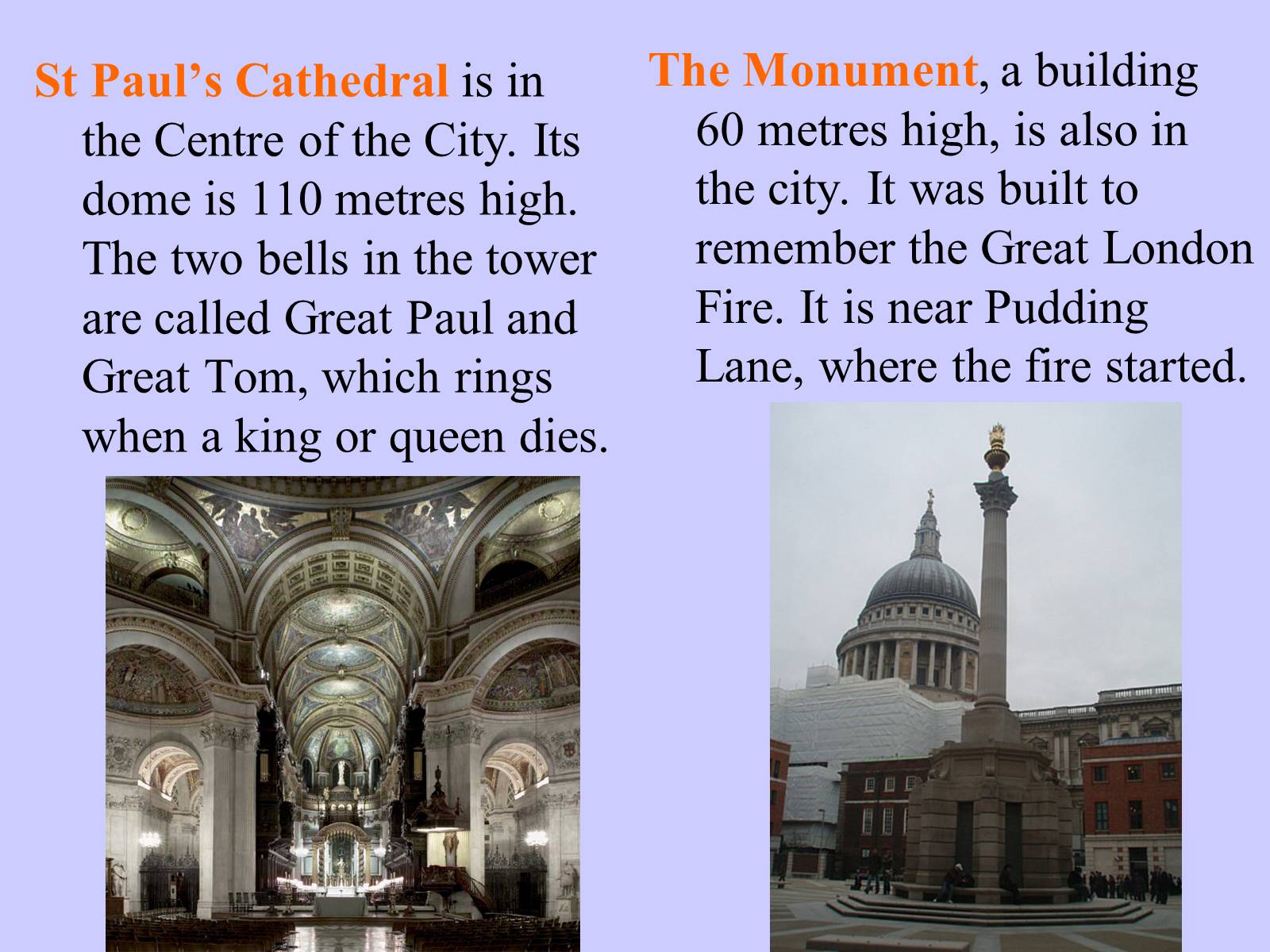
St Paul's Cathedral is in the Centre of the City. Its dome is 110 metres high. The two bells in the tower are called Great Paul and Great Tom, which rings when a king or queen dies.
The Monument, a building 60 metres high, is also in the city. It was built to remember the Great London Fire. It is near Pudding Lane, where the fire started.
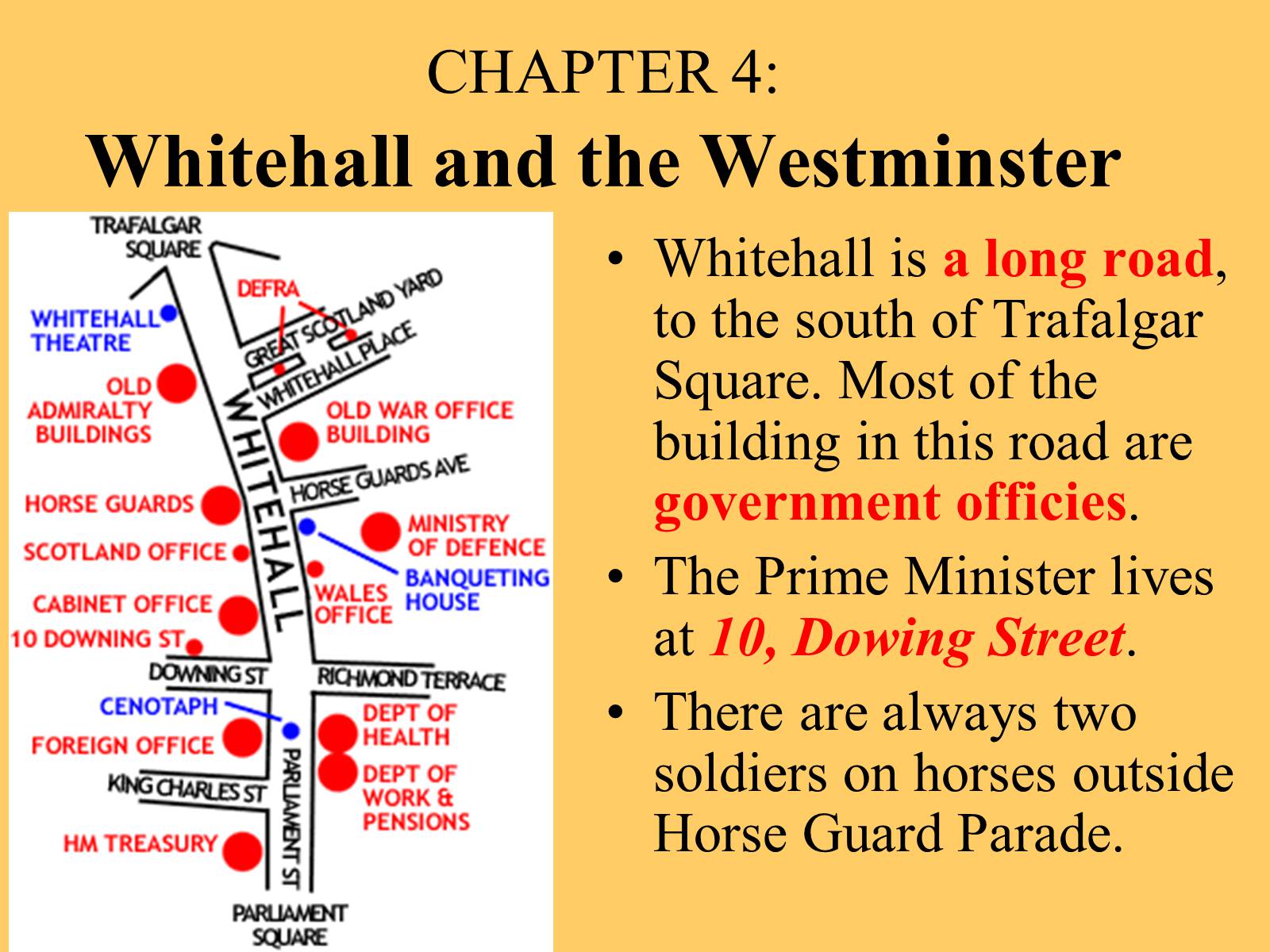
CHAPTER 4: Whitehall and the Westminster
Whitehall is a long road, to the south of Trafalgar Square. Most of the building in this road are government officies.
The Prime Minister lives at 10, Dowing Street.
There are always two soldiers on horses outside Horse Guard Parade.
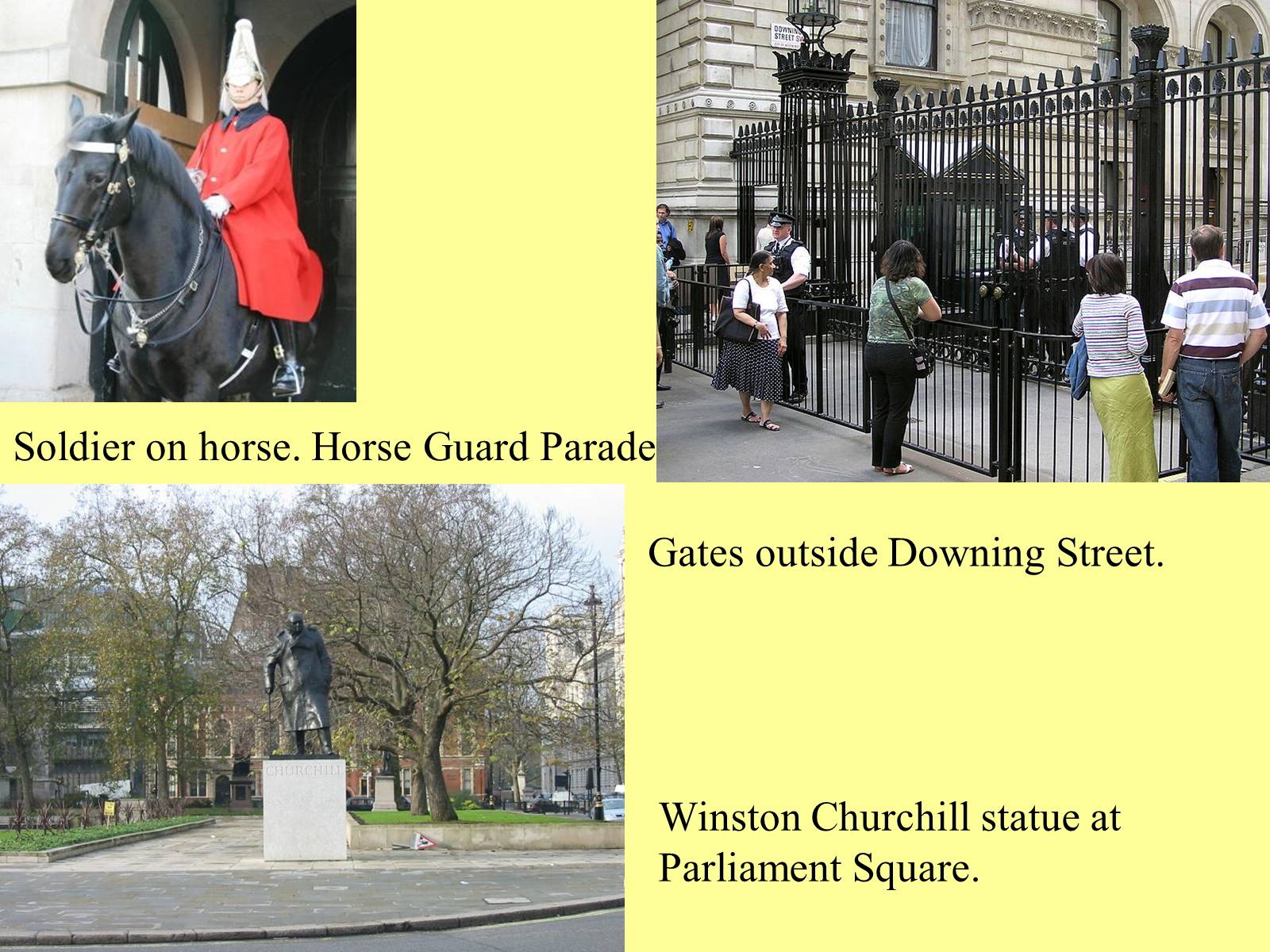
Soldier on horse. Horse Guard Parade
Gates outside Downing Street.
Winston Churchill statue at Parliament Square.
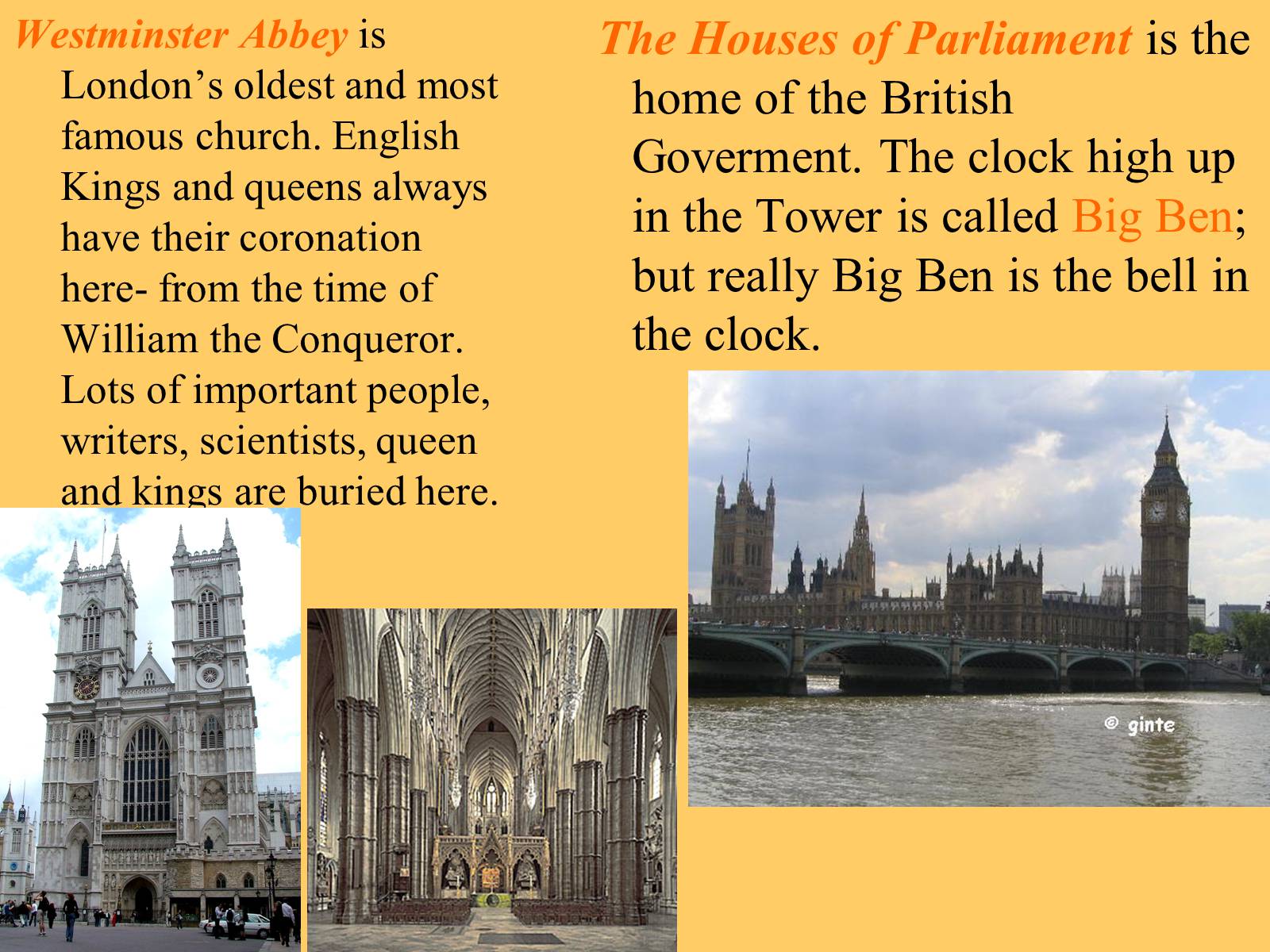
Westminster Abbey is London's oldest and most famous church. English Kings and queens always have their coronation here- from the time of William the Conqueror. Lots of important people, writers, scientists, queen and kings are buried here.
The Houses of Parliament is the home of the British Goverment. The clock high up in the Tower is called Big Ben; but really Big Ben is the bell in the clock.
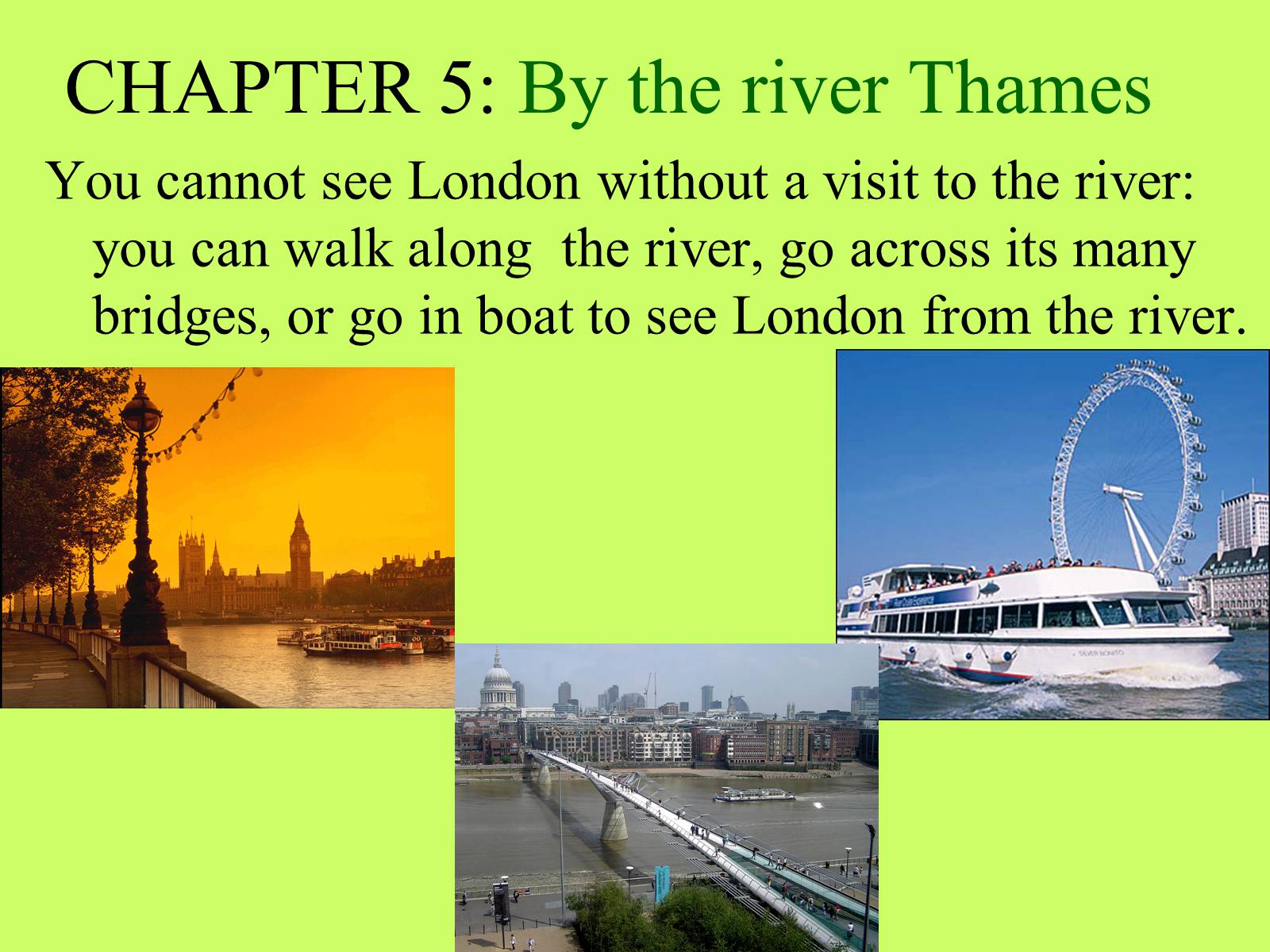
CHAPTER 5: By the river Thames
You cannot see London without a visit to the river: you can walk along the river, go across its many bridges, or go in boat to see London from the river.
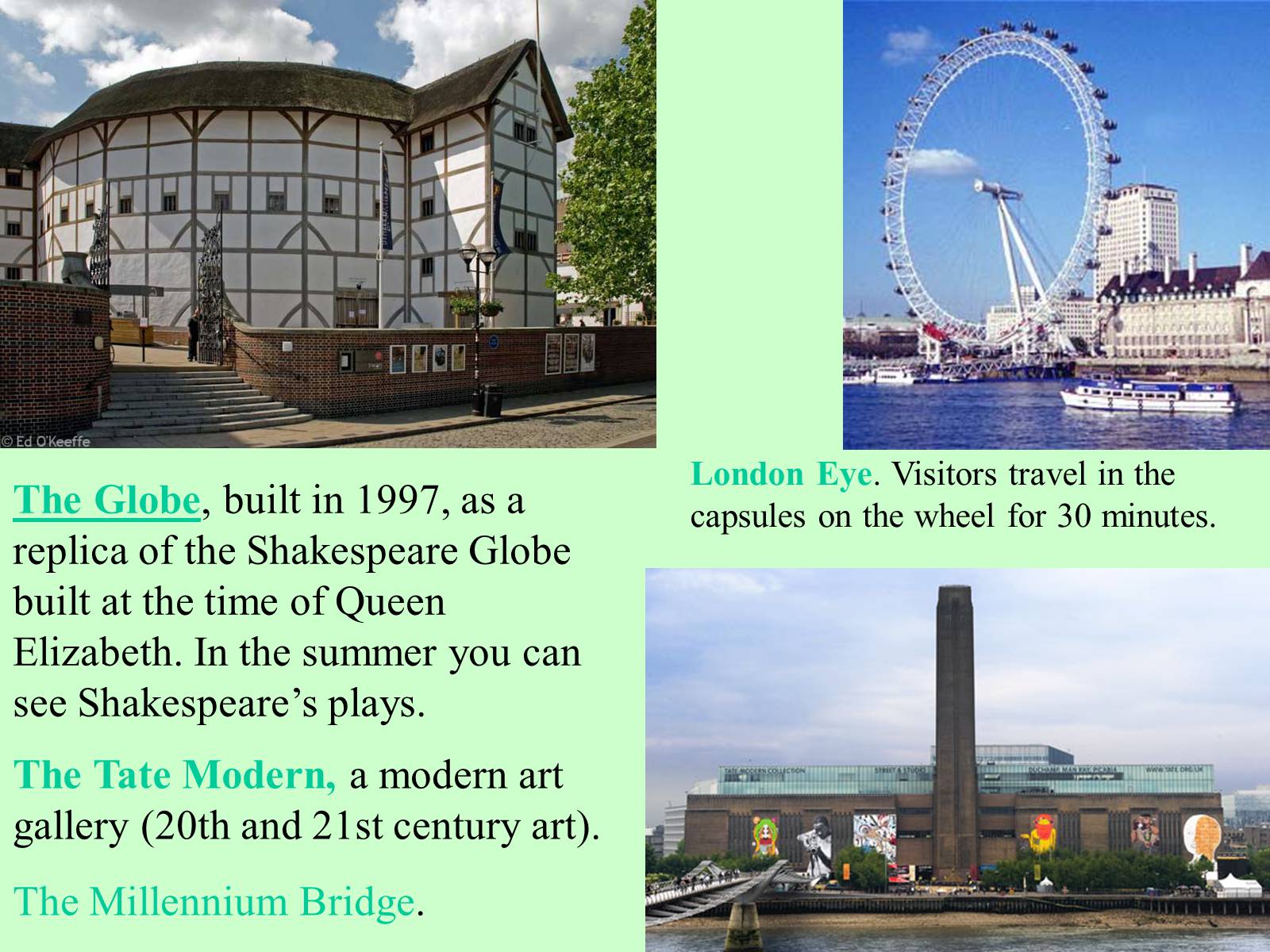
The Globe, built in 1997, as a replica of the Shakespeare Globe built at the time of Queen Elizabeth. In the summer you can see Shakespeare's plays.
The Tate Modern, a modern art gallery (20th and 21st century art).
The Millennium Bridge.
London Eye. Visitors travel in the capsules on the wheel for 30 minutes.
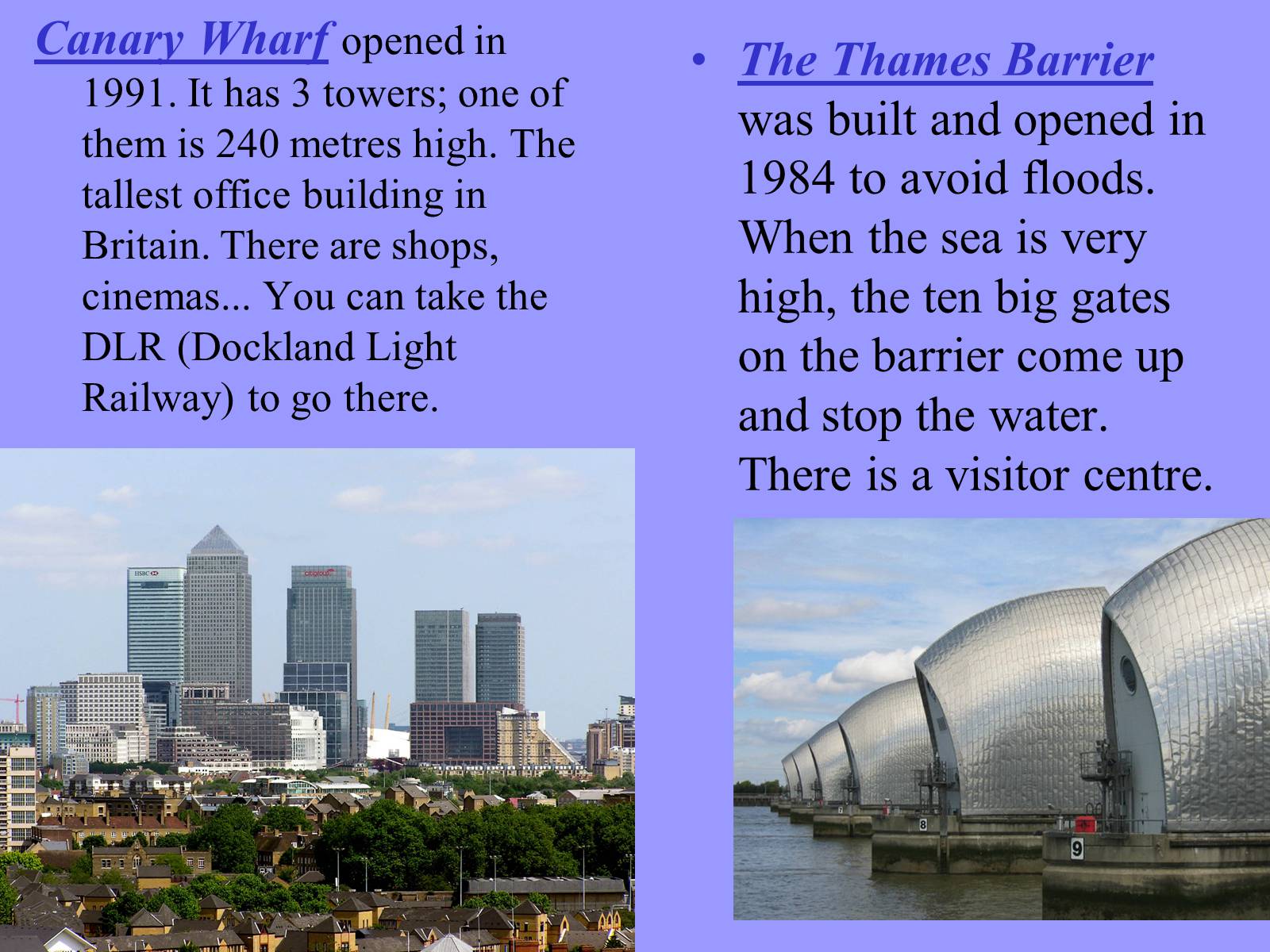
Canary Wharf opened in 1991. It has 3 towers; one of them is 240 metres high. The tallest office building in Britain. There are shops, cinemas... You can take the DLR (Dockland Light Railway) to go there.
The Thames Barrier was built and opened in 1984 to avoid floods. When the sea is very high, the ten big gates on the barrier come up and stop the water. There is a visitor centre.
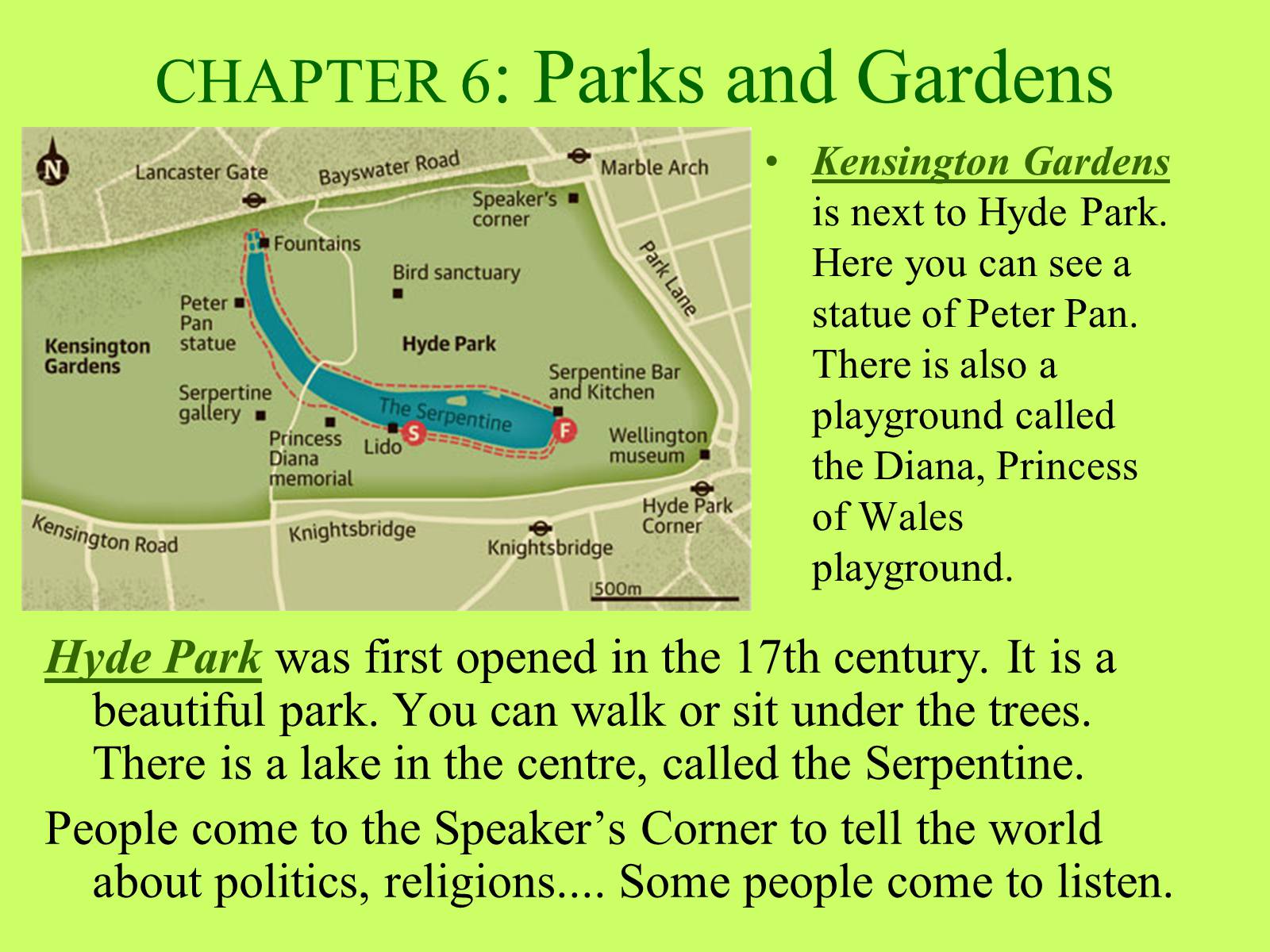
CHAPTER 6: Parks and Gardens
Hyde Park was first opened in the 17th century. It is a beautiful park. You can walk or sit under the trees. There is a lake in the centre, called the Serpentine.
People come to the Speaker's Corner to tell the world about politics, religions.... Some people come to listen.
Kensington Gardens is next to Hyde Park. Here you can see a statue of Peter Pan. There is also a playground called the Diana, Princess of Wales playground.
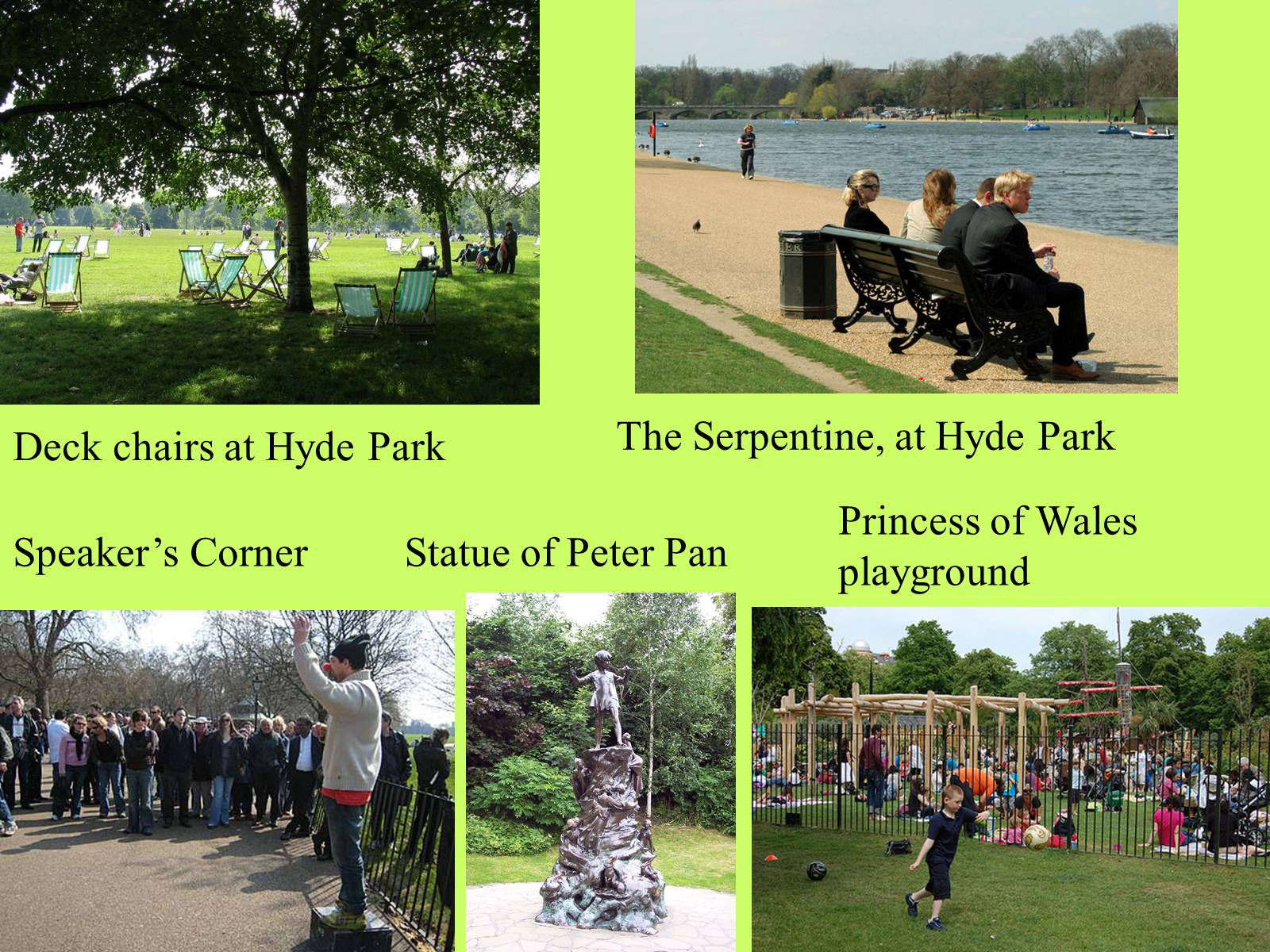
Deck chairs at Hyde Park
The Serpentine, at Hyde Park
Speaker's Corner
Statue of Peter Pan
Princess of Wales playground
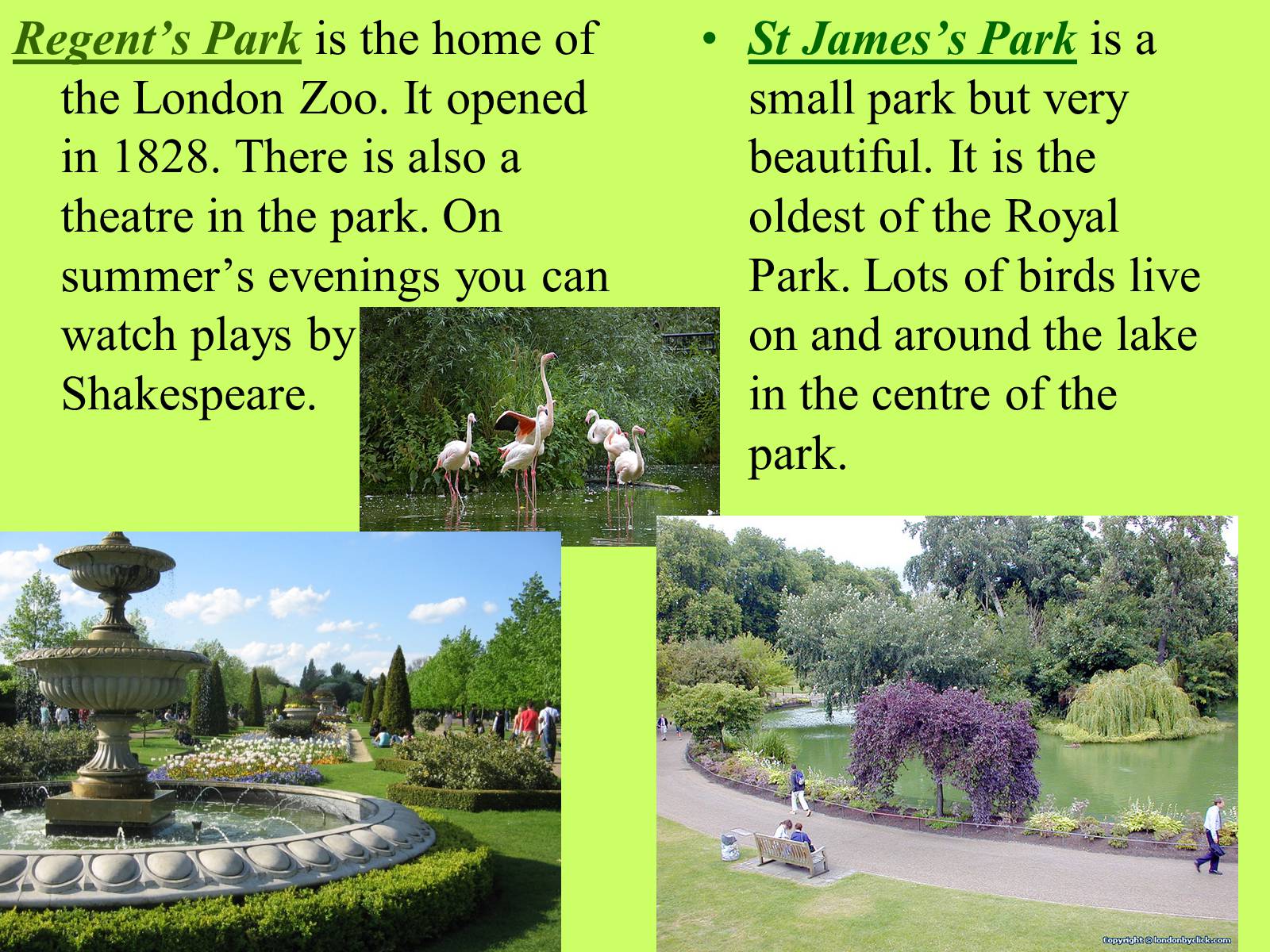
Regent's Park is the home of the London Zoo. It opened in 1828. There is also a theatre in the park. On summer's evenings you can watch plays by Shakespeare.
St James's Park is a small park but very beautiful. It is the oldest of the Royal Park. Lots of birds live on and around the lake in the centre of the park.
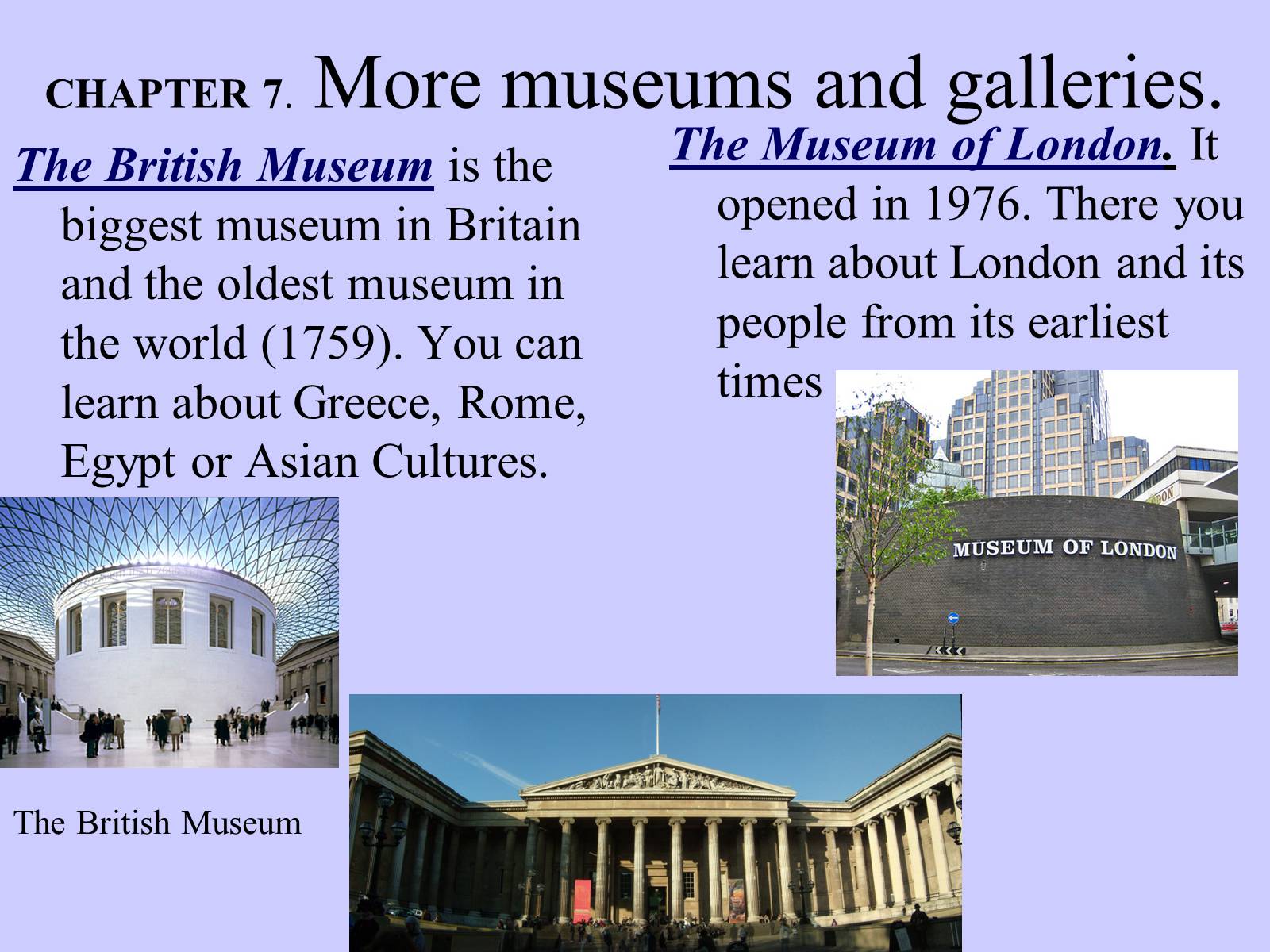
CHAPTER 7. More museums and galleries.
The British Museum is the biggest museum in Britain and the oldest museum in the world (1759). You can learn about Greece, Rome, Egypt or Asian Cultures.
The Museum of London. It opened in 1976. There you learn about London and its people from its earliest times
The British Museum
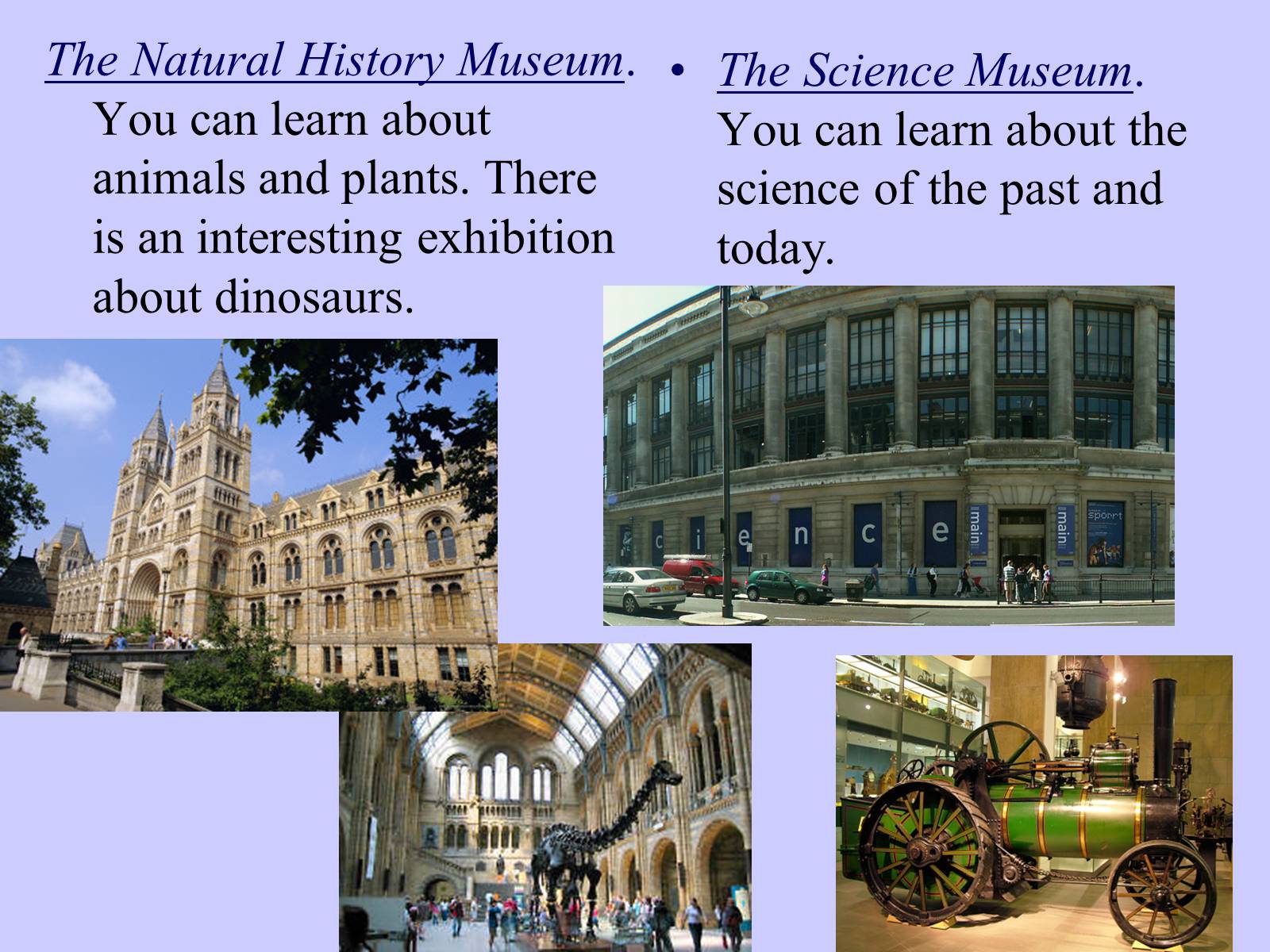
The Natural History Museum. You can learn about animals and plants. There is an interesting exhibition about dinosaurs.
The Science Museum. You can learn about the science of the past and today.

Some small museums
The Dickens House Museum. The writer Charles Dickens lived in this house.
The Sherlock Holmes Museum. Sherlock Holmes was a character in the novels of Sir Arthur Conan Doyle. In the museum you can learn about him.
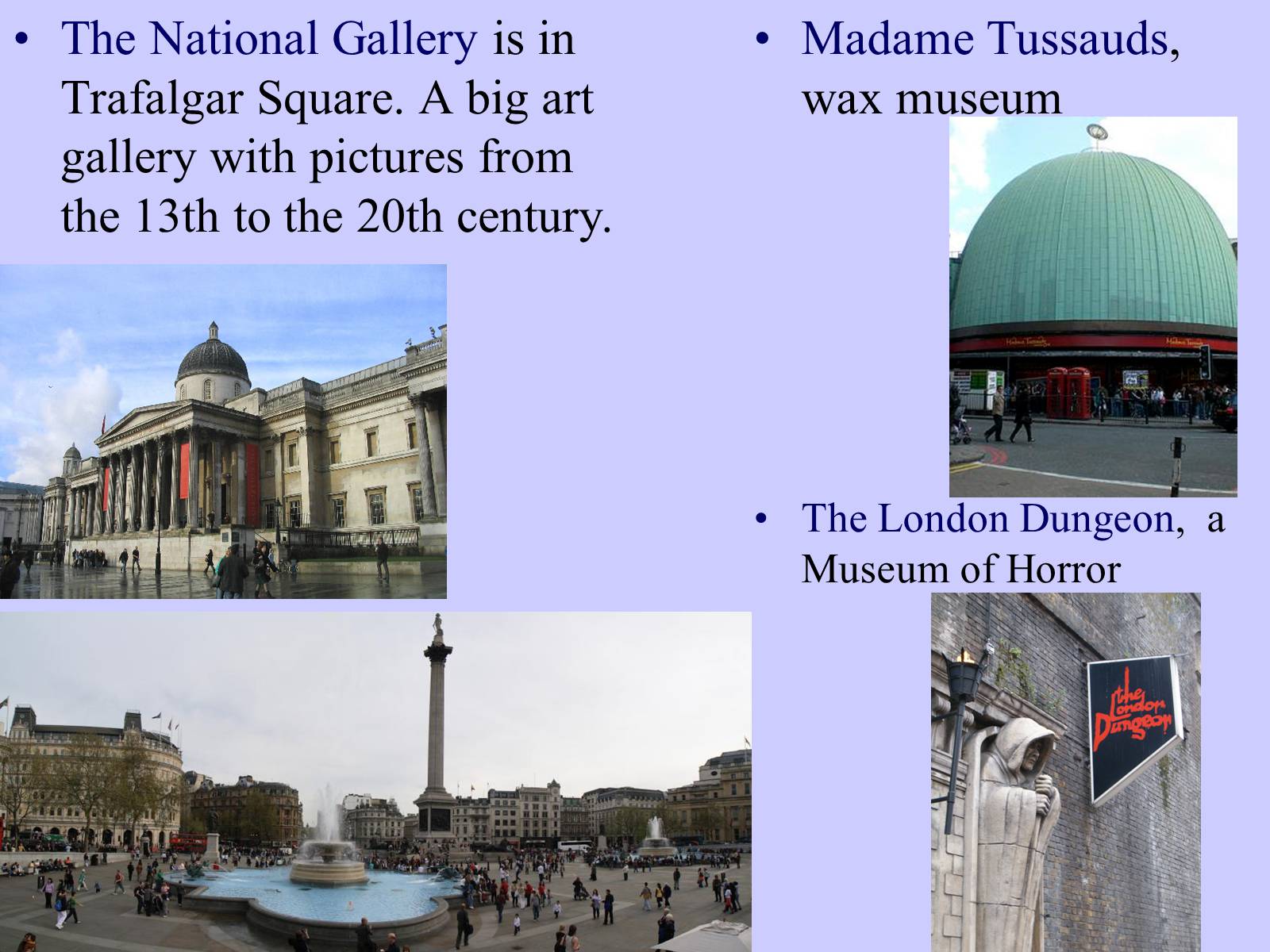
The National Gallery is in Trafalgar Square. A big art gallery with pictures from the 13th to the 20th century.
Madame Tussauds, wax museum
The London Dungeon, a Museum of Horror
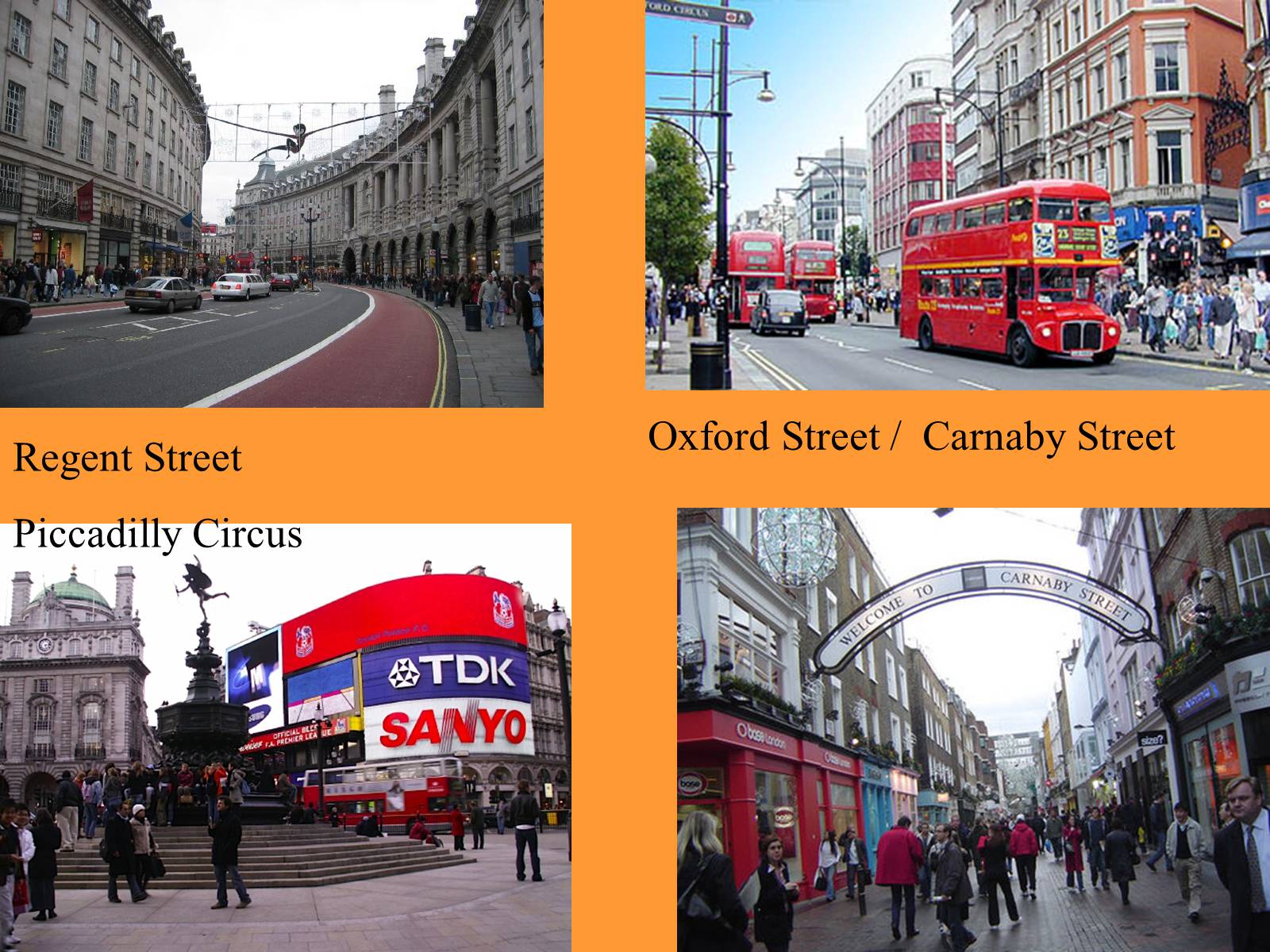
Regent Street
Piccadilly Circus
Oxford Street / Carnaby Street
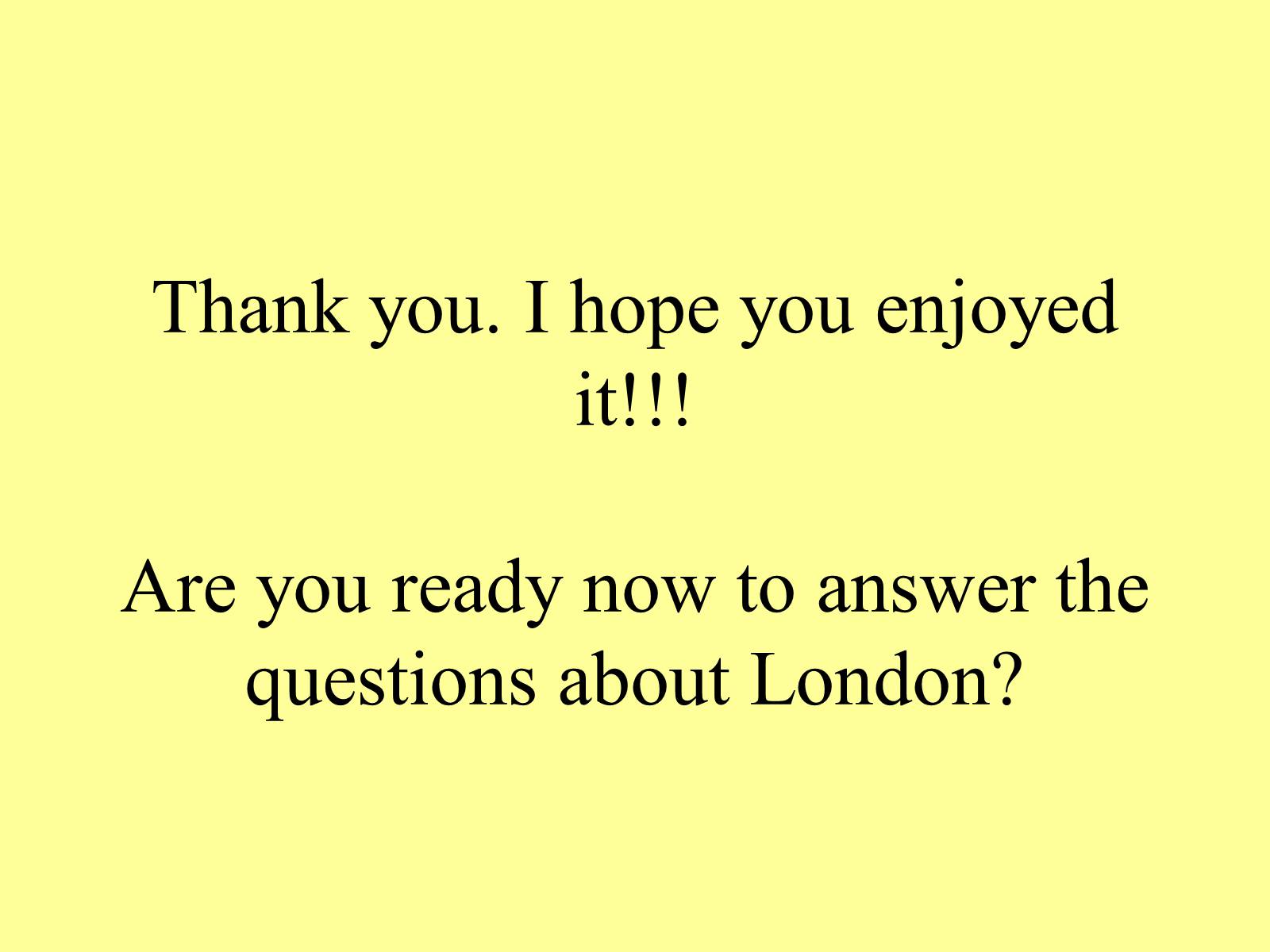
Thank you. I hope you enjoyed it!!!Are you ready now to answer the questions about London?